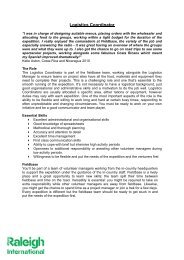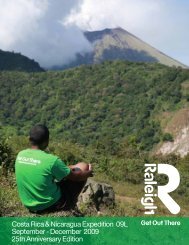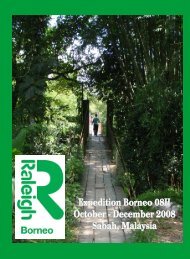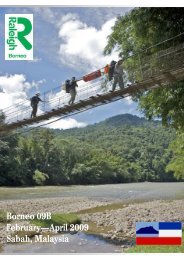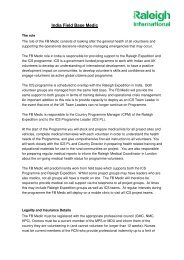India is abou United States most populous country in t population of ...
India is abou United States most populous country in t population of ...
India is abou United States most populous country in t population of ...
Create successful ePaper yourself
Turn your PDF publications into a flip-book with our unique Google optimized e-Paper software.
Facts on<br />
<strong>India</strong><br />
No apologies at all that th<strong>is</strong> <strong>is</strong> a lengthy document<br />
Because <strong>India</strong> <strong>is</strong> such an <strong>in</strong>terest<strong>in</strong>g and varied<br />
<strong>country</strong> bullet po<strong>in</strong>ts just cannot convey the breadth<br />
and depth <strong>of</strong> <strong>in</strong>formation <strong>of</strong> <strong>in</strong>terest <strong>abou</strong>t <strong>India</strong>.<br />
The diversity <strong>in</strong> culture and foods <strong>of</strong> <strong>India</strong>, cloth<strong>in</strong>g<br />
and languages, religion and life styles <strong>is</strong> marked by a<br />
unique sense <strong>of</strong> <strong>in</strong>tegration - based on a common<br />
heritage. Th<strong>is</strong> sense <strong>of</strong> unity also serves to preserve<br />
<strong>India</strong>’s national <strong>in</strong>tegrity. An <strong>India</strong>n <strong>is</strong> first an <strong>India</strong>n,<br />
and then a Sikh, H<strong>in</strong>du, Muslim, Punjabi, Bengali or<br />
S<strong>in</strong>dhi. Each state <strong>in</strong> <strong>India</strong> <strong>is</strong> <strong>in</strong>tegral to its entity as a<br />
whole even while carv<strong>in</strong>g a unique niche for itself.<br />
<strong>India</strong> <strong>is</strong> the largest democracy <strong>in</strong> the<br />
world.<br />
<strong>India</strong> <strong>is</strong> <strong>abou</strong>t 1/3 the size <strong>of</strong> the<br />
<strong>United</strong> <strong>States</strong>, yet it <strong>is</strong> the second<br />
<strong>most</strong> <strong>populous</strong> <strong>country</strong> <strong>in</strong> the world, with a<br />
<strong>population</strong> <strong>of</strong> 1,166,079,217. <strong>India</strong> <strong>is</strong> the seventh
largest <strong>country</strong> <strong>in</strong> the world, at 1.27 million<br />
square miles.<br />
Did you know ......<br />
1. Chess was <strong>in</strong>vented <strong>in</strong> <strong>India</strong>. The orig<strong>in</strong>al word for “chess” <strong>is</strong> the<br />
Sanskrit chaturanga, mean<strong>in</strong>g “four members <strong>of</strong> an army”—which<br />
were <strong>most</strong>ly likely elephants, horses, chariots, and foot soldiers<br />
2. The 'Place Value System' and the 'Decimal System' were developed <strong>in</strong> <strong>India</strong> <strong>in</strong> 100 B.C.<br />
3. The World's First Granite Temple <strong>is</strong> the Brihadeswara Temple at Tanjavur, Tamil Nadu.<br />
The shikhara <strong>of</strong> the temple <strong>is</strong> made from a s<strong>in</strong>gle 80-tonne piece <strong>of</strong> granite. Th<strong>is</strong><br />
magnificent temple was built <strong>in</strong> just five years, (between 1004 AD and 1009 AD) dur<strong>in</strong>g<br />
the reign <strong>of</strong> Rajaraja Chola.<br />
4. The game <strong>of</strong> Snakes & Ladders was created by the 13th century poet sa<strong>in</strong>t Gyandev. It<br />
was orig<strong>in</strong>ally called 'Mokshapat'. The ladders <strong>in</strong> the game represented virtues and the<br />
snakes <strong>in</strong>dicated vices. The game was played with shells and dices. In time, the game<br />
underwent several modifications, but its mean<strong>in</strong>g rema<strong>in</strong>ed the same, i.e. good deeds<br />
take people to heaven and evil to a cycle <strong>of</strong> re-births.<br />
5. The world's highest cricket ground <strong>is</strong> <strong>in</strong> Chail, Himachal Pradesh. Built <strong>in</strong> 1893 after<br />
level<strong>in</strong>g a hilltop, th<strong>is</strong> cricket pitch <strong>is</strong> 2444 meters above sea level.<br />
6. <strong>India</strong> has the largest number <strong>of</strong> Post Offices <strong>in</strong> the world.<br />
7. The largest employer <strong>in</strong> the world <strong>is</strong> the <strong>India</strong>n Railways, employ<strong>in</strong>g over a million<br />
people.<br />
8. The art <strong>of</strong> Navigation & Navigat<strong>in</strong>g was born <strong>in</strong> the river S<strong>in</strong>dh over 6000 years ago. The<br />
very word Navigation <strong>is</strong> derived from the Sanskrit word 'NAVGATIH'. The word navy <strong>is</strong><br />
also derived from the Sanskrit word 'Nou'.<br />
9. Mysore Zoo was establ<strong>is</strong>hed under royal patronage <strong>in</strong> 1892, mak<strong>in</strong>g it one <strong>of</strong> the<br />
oldest zoos <strong>in</strong> the world.<br />
10. Bhaskaracharya rightly calculated the time taken by the earth to orbit the Sun hundreds<br />
<strong>of</strong> years before the astronomer Smart. Accord<strong>in</strong>g to h<strong>is</strong> calculation, the time taken by the<br />
Earth to orbit the Sun was 365.258756484 days.<br />
11. The value <strong>of</strong> "pi" was first calculated by the <strong>India</strong>n Mathematician Budhayana, and he<br />
expla<strong>in</strong>ed the concept <strong>of</strong> what <strong>is</strong> known as the Pythagorean Theorem. He d<strong>is</strong>covered th<strong>is</strong><br />
<strong>in</strong> the 6th century, long before the European mathematicians.<br />
12. Algebra, Trigonometry and Calculus also orig<strong>in</strong>ated <strong>in</strong> <strong>India</strong>.Quadratic Equations were<br />
used by Sridharacharya <strong>in</strong> the 11th century. The largest numbers the Greeks and the<br />
Romans used were 106 whereas H<strong>in</strong>dus used numbers as big as 10*53 (i.e. 10 to the<br />
power <strong>of</strong> 53) with specific names as early as 5000 B.C.dur<strong>in</strong>g the Vedic period.Even<br />
today, the largest used number <strong>is</strong> Terra: 10*12(10 to the power <strong>of</strong> 12).<br />
13. Until 1896, <strong>India</strong> was the only source <strong>of</strong> diamonds <strong>in</strong> the world<br />
14. The Baily Bridge <strong>is</strong> the highest bridge <strong>in</strong> the world. Th<strong>is</strong> bridge <strong>is</strong> located <strong>in</strong> the<br />
Himalayan mounta<strong>in</strong>s, between the River Dras and River Suru, <strong>in</strong> the Ladakh Valley. It <strong>is</strong><br />
30 meters (98 ft) long, and <strong>is</strong> at an altitude <strong>of</strong> 5,602 meters (18,379 ft) above sea level. It<br />
was built <strong>in</strong> 1982 by the <strong>India</strong>n Army.<br />
15. Sushruta <strong>is</strong> regarded as the Father <strong>of</strong> Surgery. Over 2600 years ago Sushrata & h<strong>is</strong> team<br />
conducted complicated surgeries like cataract, artificial limbs, cesareans, fractures,<br />
ur<strong>in</strong>ary stones, plastic surgery and bra<strong>in</strong> surgeries.<br />
16. Martial Arts were first created <strong>in</strong> <strong>India</strong>, and later spread to Asia by Buddh<strong>is</strong>t m<strong>is</strong>sionaries.<br />
17. Yoga has its orig<strong>in</strong>s <strong>in</strong> <strong>India</strong> and has ex<strong>is</strong>ted for over 5,000 years.<br />
18. <strong>India</strong> <strong>is</strong> one <strong>of</strong> the few countries <strong>in</strong> the World, which ga<strong>in</strong>ed <strong>in</strong>dependence without<br />
violence.
19. <strong>India</strong> <strong>is</strong> the only <strong>country</strong> other than US and Japan, to have built a super computer<br />
<strong>in</strong>digenously.<br />
20. Albert E<strong>in</strong>ste<strong>in</strong> said: We owe a lot to the <strong>India</strong>ns, who taught us how to count, without<br />
which no worthwhile scientific d<strong>is</strong>covery could have been made.<br />
21. Mark Twa<strong>in</strong> said: <strong>India</strong> <strong>is</strong> the cradle <strong>of</strong> the human race, the birthplace<br />
<strong>of</strong> human speech, the mother <strong>of</strong> h<strong>is</strong>tory, the grandmother <strong>of</strong> legend,<br />
and the great grand mother <strong>of</strong> tradition. Our <strong>most</strong> valuable and <strong>most</strong><br />
<strong>in</strong>structive materials <strong>in</strong> the h<strong>is</strong>tory <strong>of</strong> man are treasured up <strong>in</strong> <strong>India</strong><br />
only.<br />
22. Hu Shih, former Ambassador <strong>of</strong> Ch<strong>in</strong>a to USA said: <strong>India</strong> conquered<br />
and dom<strong>in</strong>ated Ch<strong>in</strong>a culturally for 20 centuries without ever hav<strong>in</strong>g to<br />
send a s<strong>in</strong>gle soldier across her border.<br />
23. <strong>India</strong>n V<strong>in</strong>od Dahm was the creator <strong>of</strong> Pentium chip<br />
24. <strong>India</strong>n Sabeer Bhatia was the founder and creator <strong>of</strong> Hotmail<br />
25. The Kumbh Mela (or Grand Pitcher Festival) <strong>is</strong> a huge H<strong>in</strong>du religious festival that takes<br />
place <strong>in</strong> <strong>India</strong> every 12 years. In 2001, 60 million people attended, break<strong>in</strong>g the record for<br />
the world’s biggest gather<strong>in</strong>g. The mass <strong>of</strong> people was photographed from space by a<br />
satellite.<br />
26. Many <strong>India</strong>ns f<strong>in</strong>d toilet paper repellent and consider it cleaner to splash water with the<br />
left hand <strong>in</strong> the appropriate direction. Consequently, the left hand <strong>is</strong> considered unclean<br />
and <strong>is</strong> never used for eat<strong>in</strong>g.<br />
27. It <strong>is</strong> illegal for foreigners to import or export <strong>India</strong>n currency (rupees)<br />
28. Cows can be found freely wander<strong>in</strong>g the streets <strong>of</strong> <strong>India</strong>’s cities. They are considered<br />
sacred and will <strong>of</strong>ten wear a tilak, a H<strong>in</strong>du symbol <strong>of</strong> good fortune. Cows are considered<br />
one <strong>of</strong> humank<strong>in</strong>d’s seven mothers because she <strong>of</strong>fers milk as does one’s natural<br />
mother.<br />
29. Many <strong>India</strong>n wives will never say her husband’s name aloud, as it <strong>is</strong> a sign <strong>of</strong> d<strong>is</strong>respect.<br />
When address<strong>in</strong>g him, the wife will use several <strong>in</strong>direct references, such as “ji” or “look<br />
here” or “hello,” or even refer to him as the father <strong>of</strong> her child.<br />
30. A widow <strong>is</strong> considered bad luck - otherw<strong>is</strong>e, her husband wouldn’t have died. Elderly<br />
women <strong>in</strong> the village might call a widow “the one who ate her husband.” In some<br />
orthodox families, widows are not allowed near newlyweds or welcomed at social<br />
gather<strong>in</strong>gs.<br />
31. The earliest cotton <strong>in</strong> the world was spun and woven <strong>in</strong> <strong>India</strong>. Roman emperors would<br />
wear delicate cotton from <strong>India</strong> that they would call “woven w<strong>in</strong>ds.” Mogul emperors<br />
called the fabrics “morn<strong>in</strong>g dew” and “cloth <strong>of</strong> runn<strong>in</strong>g water.<br />
32. <strong>India</strong> <strong>is</strong> the world’s largest producer <strong>of</strong> dried beans, such as kidney beans and chickpeas.<br />
It also leads the world <strong>in</strong> banana exports;<br />
33. The Bengal tiger <strong>is</strong> <strong>India</strong>’s national animal. It was once ubiquitous throughout the <strong>country</strong>,<br />
but now there are fewer than 3,000 wild tigers left.<br />
34. <strong>India</strong> has the world’s largest movie <strong>in</strong>dustry, based <strong>in</strong> the city <strong>of</strong> Mumbai (known as the<br />
“City <strong>of</strong> Dreams”). The B <strong>in</strong> “Bollywood” comes from Bombay, the former name for<br />
Mumbai. Al<strong>most</strong> all Bollywood movies are musicals.<br />
35. Mumbai (Bombay) <strong>is</strong> <strong>India</strong>’s largest city, with a <strong>population</strong> <strong>of</strong> 14 million. In 1661, Brit<strong>is</strong>h<br />
eng<strong>in</strong>eers built a causeway unit<strong>in</strong>g all seven orig<strong>in</strong>al <strong>is</strong>lands <strong>of</strong> Bombay <strong>in</strong>to a s<strong>in</strong>gle<br />
landmass.<br />
36. Mohandas K. Gandhi (1869-1948) 1948) <strong>is</strong> known around the world as Mahatma, which <strong>is</strong> an<br />
honorific title mean<strong>in</strong>g “Great Soul” <strong>in</strong> the ancient <strong>India</strong>n language <strong>of</strong> Sanskrit. He<br />
devoted h<strong>is</strong> life to free <strong>India</strong> from Brit<strong>is</strong>h rule peacefully and based h<strong>is</strong> campaign on civil<br />
d<strong>is</strong>obedience. H<strong>is</strong> birthday, October 2, <strong>is</strong> a national holiday. He was assass<strong>in</strong>ated <strong>in</strong><br />
1948.<br />
37. The Lotus temple <strong>is</strong> one <strong>of</strong> the <strong>most</strong> v<strong>is</strong>ited temples <strong>in</strong> the world, with over 50 million<br />
v<strong>is</strong>itors per year. The lotus <strong>is</strong> sacred to both H<strong>in</strong>dus and Buddh<strong>is</strong>ts. The Bahá'í house <strong>of</strong><br />
worship <strong>in</strong> Delhi, known as the “Lotus Temple,” <strong>is</strong> shaped like a lotus flower with 27<br />
gigantic “petals” that are covered <strong>in</strong> marble.
38. The Banyan, or <strong>India</strong>n fig tree, <strong>is</strong> considered a symbol <strong>of</strong> immortality and <strong>is</strong> mentioned <strong>in</strong><br />
many <strong>India</strong>n myths and legends. Th<strong>is</strong> self-renew<strong>in</strong>g plant <strong>is</strong> <strong>India</strong>’s national tree.<br />
39. Marigold flowers are used as decoration for H<strong>in</strong>du marriages and are a symbol <strong>of</strong> good<br />
fortune and happ<strong>in</strong>ess.<br />
40. The <strong>of</strong>ficial name <strong>of</strong> <strong>India</strong> <strong>is</strong> the Republic <strong>of</strong> <strong>India</strong>. The name “<strong>India</strong>”<br />
derives from the River Indus, which <strong>most</strong> likely <strong>is</strong> derived from the<br />
Sanskrit s<strong>in</strong>dhu, mean<strong>in</strong>g “river.” The <strong>of</strong>ficial Sanskrit name <strong>of</strong> <strong>India</strong><br />
<strong>is</strong> Bharat, after the legendary k<strong>in</strong>g <strong>in</strong> the epic Mahabharata.<br />
41. Introduced by the Brit<strong>is</strong>h, cricket <strong>is</strong> <strong>India</strong>’s <strong>most</strong> popular sport. Hockey<br />
<strong>is</strong> considered the national sport, and the <strong>India</strong>n field hockey team<br />
proudly won Olympic gold <strong>in</strong> 1928.<br />
42. Most h<strong>is</strong>torians agree that the first recorded account <strong>of</strong> plastic surgery <strong>is</strong> found <strong>in</strong> ancient<br />
<strong>India</strong>n Sanskrit texts.<br />
43. <strong>India</strong> has the world’s third largest road network at 1.9 million miles. It also has the world’s<br />
second largest rail network, which <strong>is</strong> the world’s largest civilian employer with 16 million<br />
workers.<br />
44. Though the Ganges <strong>is</strong> one <strong>of</strong> the dirtiest rivers <strong>in</strong> the world, bath<strong>in</strong>g <strong>in</strong> the river <strong>is</strong> thought<br />
to wash away one’s s<strong>in</strong>s<br />
45. Raziya Sultana (1205-1240) 1240) was the first woman leader <strong>of</strong> <strong>India</strong>. She was considered a<br />
great leader, though she ruled for only three years before be<strong>in</strong>g murdered.<br />
46. It <strong>is</strong> traditional to wear white, not black, to a funeral <strong>in</strong> <strong>India</strong>. Widows will <strong>of</strong>ten wear white<br />
<strong>in</strong> contrast to the colourful clothes <strong>of</strong> married or s<strong>in</strong>gle women.<br />
47. All <strong>of</strong> <strong>India</strong> <strong>is</strong> under a s<strong>in</strong>gle time zone.<br />
48. <strong>India</strong> experiences six seasons: summer, autumn, w<strong>in</strong>ter, spr<strong>in</strong>g, summer monsoon, and<br />
w<strong>in</strong>ter monsoon.<br />
49. The Taj Mahal (“crown palace”) was built by Mughal Emperor Shah Jahan (1592-1666)<br />
for h<strong>is</strong> beloved wife Mumtaz Mahal (1593-1631). 1631). Th<strong>is</strong> architectural beauty has been<br />
called “marbled embroidery” for its <strong>in</strong>tricate workmanship. It took 22,000 workmen 22<br />
years to complete it.<br />
50. When the first <strong>in</strong>dependent prime m<strong>in</strong><strong>is</strong>ter <strong>of</strong> <strong>India</strong>, pacif<strong>is</strong>t Jawaharlal Nehru (1889-<br />
1964), was featured <strong>in</strong> Vogue, h<strong>is</strong> d<strong>is</strong>t<strong>in</strong>ctive close fitt<strong>in</strong>g, s<strong>in</strong>gle-breasted jacket briefly<br />
became an important fashion statement for the Mod movement <strong>in</strong> the West. Named the<br />
Nehru jacket, the prime m<strong>in</strong><strong>is</strong>ter’s coat was popularized by the Beatles and worn by such<br />
famous people as Johnny Carson (1925-2005) 2005) and Sammy Dav<strong>is</strong> Jr. (1925-1990).n<br />
51. Varanasi, also known as Benaras, was called "the Ancient City" when Lord Buddha<br />
v<strong>is</strong>ited it <strong>in</strong> 500 B.C., and <strong>is</strong> the oldest, cont<strong>in</strong>uously <strong>in</strong>habited city <strong>in</strong> the world today
Population<br />
<strong>India</strong> <strong>is</strong> a <strong>country</strong> with a <strong>population</strong> <strong>of</strong> around 1.17 billion<br />
<strong>India</strong> <strong>is</strong> the second <strong>most</strong> populated <strong>country</strong> <strong>is</strong> the world after Ch<strong>in</strong>a<br />
<strong>India</strong> has more than two thousand ethnic groups<br />
<strong>India</strong>n large <strong>population</strong> has always been a major <strong>is</strong>sue along with problems like poverty,<br />
illiteracy and unemployment. <strong>India</strong> <strong>is</strong> also a <strong>country</strong> that has the maximum number <strong>of</strong> youths.<br />
<strong>India</strong>n <strong>population</strong> accounts for 16% <strong>of</strong> the total world <strong>population</strong>.<br />
The <strong>population</strong> density <strong>of</strong> the nation amounts to 324 people per square kilometer. <strong>India</strong> has a<br />
poor sex ratio with only 927 females per 1000 males.<br />
More than 70% <strong>of</strong> <strong>India</strong>’s <strong>population</strong> lives <strong>in</strong> rural areas.<br />
There are more than 550, 000 villages and 200 cities and towns <strong>in</strong> <strong>India</strong>.<br />
22% <strong>of</strong> the <strong>population</strong> lives below poverty l<strong>in</strong>e.<br />
The standard <strong>of</strong> liv<strong>in</strong>g and the quality <strong>of</strong> life especially those <strong>of</strong> women rema<strong>in</strong>s poor<br />
compared to that <strong>of</strong> people <strong>in</strong> developed nations.<br />
The unemployment rate <strong>in</strong> <strong>India</strong> <strong>is</strong> 7.8%. However with globalization, privatization and<br />
liberalization problems <strong>of</strong> unemployment have been solved to certa<strong>in</strong> extent.<br />
Though <strong>India</strong>n <strong>population</strong> <strong>is</strong> seen as a hurdle along its progress, it <strong>is</strong> also a power for <strong>India</strong>.<br />
No other <strong>country</strong> has such human capital and it truly makes <strong>India</strong> what it <strong>is</strong> rightly called as a<br />
‘Young Nation’ emerg<strong>in</strong>g as a global power.<br />
Population figures<br />
Rank Country Population Date<br />
# 1 Ch<strong>in</strong>a: 1,324,190,000 2009<br />
# 2 <strong>India</strong>: 1,170,250,000 2009<br />
# 4 <strong>United</strong> <strong>States</strong>: 306,694,000 2008
Ancient <strong>India</strong><br />
<strong>India</strong> never<br />
<strong>in</strong>vaded any<br />
<strong>country</strong> <strong>in</strong><br />
her last<br />
100,000 years<br />
<strong>of</strong> h<strong>is</strong>tory<br />
The name '<strong>India</strong>' <strong>is</strong><br />
derived from the<br />
River Indus, the<br />
valleys around<br />
which were the<br />
home <strong>of</strong> the early<br />
settlers. The Aryan<br />
worshippers<br />
referred to the<br />
river Indus as the<br />
S<strong>in</strong>dhu<br />
The Persian<br />
<strong>in</strong>vaders<br />
converted it <strong>in</strong>to<br />
H<strong>in</strong>du. The name<br />
'H<strong>in</strong>dustan'<br />
comb<strong>in</strong>es S<strong>in</strong>dhu<br />
and H<strong>in</strong>du and<br />
thus refers to the<br />
land <strong>of</strong> the<br />
H<strong>in</strong>dus<br />
Over 5000 years ago<br />
<strong>India</strong>ns establ<strong>is</strong>hed<br />
Harappan culture<br />
<strong>in</strong> S<strong>in</strong>dhu Valley<br />
(Indus Valley<br />
Civilization)<br />
when many<br />
cultures were still<br />
only nomadic<br />
forest dwellers<br />
Ancient <strong>India</strong> was a <strong>country</strong> that covered the territories <strong>of</strong> Pak<strong>is</strong>tan, Bangladesh apart from<br />
the territory <strong>of</strong> current <strong>India</strong>. Ancient <strong>India</strong>n h<strong>is</strong>tory can be broadly divided <strong>in</strong>to three ages<br />
namely the Bronze Age, Indus valley civilization and the Vedic age.<br />
The h<strong>is</strong>tory <strong>of</strong> ancient <strong>India</strong> dates back 1700 BC beg<strong>in</strong>n<strong>in</strong>g with the Indus Valley Civilization,<br />
which flour<strong>is</strong>hed <strong>in</strong> the north-western part <strong>of</strong> the <strong>India</strong>n subcont<strong>in</strong>ent. <strong>India</strong>n h<strong>is</strong>tory can be<br />
divided <strong>in</strong>to the three ages namely the Bronze Age civilization, the Iron Age Vedic period<br />
were major k<strong>in</strong>gdoms were born and the Golden Age <strong>of</strong> <strong>India</strong> which saw the r<strong>is</strong>e <strong>of</strong> the Gupta<br />
empire. After the Gupta Empire, the rule <strong>of</strong> the Chalukyas, Cholas, Pallavas and Pandyas<br />
prevailed dur<strong>in</strong>g which H<strong>in</strong>du<strong>is</strong>m and Buddh<strong>is</strong>m spread to the south-east Asia.<br />
In the 6th century BC, great scholars and monks like Mahavira and Gautama Buddha were<br />
born. The h<strong>is</strong>tory <strong>of</strong> Buddh<strong>is</strong>m <strong>in</strong> <strong>India</strong> was a special chapter, which has given the world a<br />
new religion. Buddh<strong>is</strong>m was founded by Siddharth Gautama. Gautama was a pr<strong>in</strong>ce who<br />
abandoned h<strong>is</strong> k<strong>in</strong>gdom <strong>in</strong> search <strong>of</strong> the mean<strong>in</strong>g <strong>of</strong> life. Gautama Buddha diluted the culture<br />
<strong>of</strong> priesthood and caste hierarchy <strong>in</strong> the 5th century B.C. Gautam and Mahavir (the founder<br />
<strong>of</strong> Ja<strong>in</strong><strong>is</strong>m) gave the world a practical means <strong>of</strong> seek<strong>in</strong>g the truth.<br />
The Harappan civilization was establ<strong>is</strong>hed <strong>in</strong> the northwest. It was primarily an agricultural<br />
economy, which extended <strong>in</strong>to an urban mode <strong>of</strong> society. Long d<strong>is</strong>tance trade started at th<strong>is</strong><br />
time. Th<strong>is</strong> period <strong>of</strong> <strong>India</strong>n h<strong>is</strong>tory also saw extensive agricultural development around the<br />
Yamuna, Ganga and several other southern rivers which boosted <strong>population</strong>, trade and<br />
urbanization.<br />
Early <strong>in</strong> the 8th century AD, with the conquest <strong>of</strong> Baluch<strong>is</strong>tan and S<strong>in</strong>dh by Muhammad b<strong>in</strong><br />
Qasim, the religion Islam arrived <strong>in</strong> the <strong>country</strong>. It was the Islamic <strong>in</strong>vasions from Central Asia<br />
which occurred between the 10th and 15th centuries AD and brought <strong>most</strong> <strong>of</strong> northern <strong>India</strong><br />
under the rule at first <strong>of</strong> the Delhi Sultanate and later <strong>of</strong> the Mughals.<br />
Remarkable development <strong>in</strong> the field <strong>of</strong> art and architecture was seen dur<strong>in</strong>g the rule <strong>of</strong> the<br />
Mughals. At the same time, several <strong>in</strong>dependent k<strong>in</strong>gdoms, such as the Vijayanagara Empire<br />
flour<strong>is</strong>hed <strong>in</strong> southern <strong>India</strong>.<br />
With the beg<strong>in</strong>n<strong>in</strong>g <strong>in</strong> the mid-18th century, <strong>India</strong> was annexed by the Brit<strong>is</strong>h East <strong>India</strong><br />
Company. It led to the <strong>India</strong>n Upr<strong>is</strong><strong>in</strong>g <strong>of</strong> 1857 as the <strong>country</strong>men were d<strong>is</strong>sat<strong>is</strong>fied with the<br />
rule <strong>of</strong> the Brit<strong>is</strong>h. <strong>India</strong> was then directly adm<strong>in</strong><strong>is</strong>tered by the Brit<strong>is</strong>h Crown dur<strong>in</strong>g which<br />
there was a rapid development <strong>of</strong> <strong>in</strong>frastructure and an economic decl<strong>in</strong>e <strong>in</strong> the <strong>country</strong>. In<br />
the early 20th century, a nationwide struggle for <strong>in</strong>dependence was launched by the <strong>India</strong>n<br />
National Congress. The <strong>country</strong> got its <strong>in</strong>dependence from Great Brita<strong>in</strong> <strong>in</strong> 1947. The nation<br />
was there after be<strong>in</strong>g partitioned <strong>in</strong>to the dom<strong>in</strong>ions <strong>of</strong> <strong>India</strong> and Pak<strong>is</strong>tan. In 1971, Pak<strong>is</strong>tan's<br />
eastern w<strong>in</strong>g became the nation <strong>of</strong> Bangladesh.
Independence<br />
Although modern images<br />
<strong>of</strong> <strong>India</strong> <strong>of</strong>ten show poverty and lack <strong>of</strong><br />
development, <strong>India</strong> was the richest <strong>country</strong> on earth until the time <strong>of</strong> Brit<strong>is</strong>h<br />
<strong>in</strong>vasion <strong>in</strong> the early 17th Century. Chr<strong>is</strong>topher Columbus was attracted<br />
by <strong>India</strong>'s wealth.<br />
<strong>India</strong> got its <strong>in</strong>dependence on August 15th, 1947. It was the day when the <strong>India</strong>ns got<br />
liberated from the rule <strong>of</strong> the brit<strong>is</strong>h. The entire freedom struggle <strong>in</strong>volved a lot <strong>of</strong> political<br />
organizations, non-violent movements, philosophies and other acts. <strong>India</strong> got its<br />
<strong>in</strong>dependence after al<strong>most</strong> hundred years <strong>of</strong> struggle and bondage.<br />
The uproar <strong>of</strong> <strong>India</strong>ns aga<strong>in</strong>st their <strong>in</strong>dependence was a result <strong>of</strong> brit<strong>is</strong>h policy <strong>of</strong> divide and<br />
rule, exploit<strong>in</strong>g the masses, devoid<strong>in</strong>g them <strong>of</strong> basic human rights and other such <strong>is</strong>sues.<br />
Even though the 1947 <strong>India</strong>n <strong>in</strong>dependence was not a one man show, there was one man<br />
without whom <strong>India</strong> would not have been able to achieve <strong>in</strong>dependence <strong>in</strong> a non-violent way.<br />
Mohandas Karamchand Gandhi <strong>is</strong> therefore known as ‘the father <strong>of</strong> <strong>India</strong>’ all over the world.<br />
Gandhi and the Independence <strong>of</strong> <strong>India</strong> <strong>is</strong> <strong>in</strong>timately connected to each other. H<strong>is</strong> noncooperation<br />
movement along with philosophy <strong>of</strong> non-violence catapulted the <strong>India</strong>n masses<br />
towards their freedom from the Brit<strong>is</strong>h rule.<br />
The first <strong>India</strong>n protest aga<strong>in</strong>st the Brit<strong>is</strong>h rule took place <strong>in</strong> 1857 when soldiers <strong>of</strong> Brit<strong>is</strong>h<br />
East <strong>India</strong> Company rebelled under the leadership <strong>of</strong> Mangal Pandey aga<strong>in</strong>st the tyranny <strong>of</strong><br />
the company and its d<strong>is</strong>respect for <strong>India</strong>n culture. The revolt was crushed with the Brit<strong>is</strong>h<br />
separat<strong>in</strong>g the pr<strong>in</strong>cely states from Brit<strong>is</strong>h <strong>India</strong>. Th<strong>is</strong> was typical <strong>of</strong> the Brit<strong>is</strong>h’s policy <strong>of</strong><br />
divide and rule.<br />
The movement for <strong>India</strong>n Independence reached its culm<strong>in</strong>ation between 1918 and 1922 with<br />
a series <strong>of</strong> non-violent efforts by the <strong>India</strong>n National Congress under the guidance <strong>of</strong><br />
Mahatma Gandhi. Th<strong>is</strong> set the stage for <strong>India</strong>’s f<strong>in</strong>al liberation from the Brit<strong>is</strong>h Raj and led to<br />
its partition with Pak<strong>is</strong>tan on the mid-night <strong>of</strong> 15th August 1947. Partition was the price <strong>India</strong><br />
had to pay for its <strong>in</strong>dependence.<br />
The Brit<strong>is</strong>h <strong>India</strong>n Empire<br />
and surround<strong>in</strong>g countries <strong>in</strong> 1909
Modern H<strong>is</strong>tory<br />
The subsequent partition <strong>of</strong> the sub-cont<strong>in</strong>ent - <strong>in</strong>to present-day <strong>India</strong> and Pak<strong>is</strong>tan - sowed<br />
the seeds for future conflict. There have been three wars between <strong>India</strong> and its arch-rival<br />
Pak<strong>is</strong>tan s<strong>in</strong>ce 1947, two <strong>of</strong> them over the d<strong>is</strong>puted territory <strong>of</strong> Kashmir.<br />
A peace process, which started <strong>in</strong> 2004, stayed on track despite tension over Kashmir and<br />
several high-pr<strong>of</strong>ile bomb<strong>in</strong>gs until the Mumbai attacks <strong>of</strong> November 2008, which police<br />
blamed on Pak<strong>is</strong>tani militants. <strong>India</strong> announced that the process was on pause the follow<strong>in</strong>g<br />
month.<br />
Communal, caste and regional tensions cont<strong>in</strong>ue to haunt <strong>India</strong>n politics, sometimes<br />
threaten<strong>in</strong>g its long-stand<strong>in</strong>g democratic and secular ethos.<br />
In 1984 Prime M<strong>in</strong><strong>is</strong>ter Indira Gandhi was gunned down by her Sikh bodyguards after<br />
order<strong>in</strong>g troops to flush out Sikh militants from the Golden Temple <strong>in</strong> Amritsar.<br />
And <strong>in</strong> 1992, widespread H<strong>in</strong>du-Muslim violence erupted after H<strong>in</strong>du extrem<strong>is</strong>ts demol<strong>is</strong>hed<br />
the Babri mosque at Ayodhya.<br />
Independent <strong>India</strong>'s first prime m<strong>in</strong><strong>is</strong>ter, Jawaharlal Nehru, dreamed <strong>of</strong> a social<strong>is</strong>t society and<br />
created a vast public <strong>in</strong>frastructure, much <strong>of</strong> which became a burden on the state.<br />
From the late 1980s <strong>India</strong> began to open up to the outside world, encourag<strong>in</strong>g economic<br />
reform and foreign <strong>in</strong>vestment. It <strong>is</strong> now courted by the world's lead<strong>in</strong>g economic and political<br />
powers, <strong>in</strong>clud<strong>in</strong>g its one-time foe Ch<strong>in</strong>a.<br />
The <strong>country</strong> has a burgeon<strong>in</strong>g urban middle class and has made great strides <strong>in</strong> fields such<br />
as <strong>in</strong>formation technology. Its large, skilled workforce makes it a popular choice for<br />
<strong>in</strong>ternational companies seek<strong>in</strong>g to outsource work.<br />
But the vast mass <strong>of</strong> the rural <strong>population</strong> rema<strong>in</strong>s impover<strong>is</strong>hed.<br />
Their lives cont<strong>in</strong>ue to be <strong>in</strong>fluenced by the ancient H<strong>in</strong>du caste system, which assigns each<br />
person a place <strong>in</strong> the social hierarchy. D<strong>is</strong>crim<strong>in</strong>ation on the bas<strong>is</strong> <strong>of</strong> caste <strong>is</strong> now illegal and<br />
various measures have been <strong>in</strong>troduced to empower d<strong>is</strong>advantaged groups and give them<br />
easier access to opportunities - such as education and work.<br />
Nuclear tests carried out by <strong>India</strong> <strong>in</strong> May 1998 and similar tests by Pak<strong>is</strong>tan just weeks later<br />
provoked <strong>in</strong>ternational condemnation and concern over the stability <strong>of</strong> the region.<br />
The US quickly imposed sanctions on <strong>India</strong>, but more recently the two countries have<br />
improved their ties, and even agreed to share nuclear technology.<br />
<strong>India</strong> launches its own satellites and <strong>in</strong> 2008 sent its first spacecraft to the moon. It also<br />
boasts a massive c<strong>in</strong>ema <strong>in</strong>dustry, the products <strong>of</strong> which are among the <strong>most</strong> widely-watched<br />
films <strong>in</strong> the world.
Family<br />
Family has always been at the base <strong>of</strong> <strong>India</strong>n society. Most <strong>of</strong> the <strong>India</strong>ns take pride <strong>in</strong> the<br />
essence <strong>of</strong> family life. However the recent changes <strong>in</strong> the socio-political and economic arena<br />
have had a significant impact on <strong>in</strong>dividuals and families. <strong>India</strong> <strong>is</strong> a <strong>country</strong> that truly befits<br />
the phrase” unity <strong>in</strong> diversity” with so many religions, languages, cultures, castes and yet the<br />
oneness that b<strong>in</strong>ds them together. Each family unit <strong>in</strong> <strong>India</strong> <strong>is</strong> <strong>in</strong>fluenced by h<strong>is</strong> or her<br />
cultures and values. <strong>India</strong>n jo<strong>in</strong>t family system was quite prevalent a few years back.<br />
However, with western <strong>in</strong>fluences, more and more people are now will<strong>in</strong>g to stay as a nuclear<br />
family especially <strong>in</strong> urban areas. Traditional roles <strong>in</strong> family structure are now chang<strong>in</strong>g but<br />
even modern and educated families have the <strong>in</strong>tr<strong>in</strong>sic values <strong>of</strong> family life <strong>in</strong> <strong>India</strong>.<br />
Family ties are very important to <strong>India</strong>ns. Arranged marriages with<strong>in</strong> the caste system are still<br />
very much prevalent all over the <strong>country</strong>. The traditional role <strong>of</strong> a man to support the family<br />
economically and the traditional role <strong>of</strong> a woman to look after the domestic chores can be<br />
seen <strong>in</strong> rural areas. Work<strong>in</strong>g women which are now common <strong>in</strong> urban areas are still expected<br />
to fulfil their domestic responsibilities.<br />
Most <strong>India</strong>n families are conservative and sons are always more preferred than daughters as<br />
sons normally earn money for the family and support their parents dur<strong>in</strong>g their old age. <strong>India</strong>n<br />
family life has its own merits and demerits. With a family, there <strong>is</strong> emotional security, cooperation,<br />
values etc.<br />
However <strong>in</strong>dividual freedom might get restra<strong>in</strong>ed. Shar<strong>in</strong>g and car<strong>in</strong>g <strong>is</strong> another important<br />
aspect that <strong>India</strong>n jo<strong>in</strong>t families believe <strong>in</strong>. An <strong>India</strong>n family typically cons<strong>is</strong>ts <strong>of</strong> a man, h<strong>is</strong><br />
wife, their children, the man’s parents and unmarried s<strong>is</strong>ters, if any. The man <strong>most</strong>ly make<br />
h<strong>is</strong> parents live with him and looks after them. The family system <strong>is</strong> given a lot <strong>of</strong> importance<br />
<strong>in</strong> <strong>India</strong> and has worked more <strong>of</strong>ten than not.<br />
Marriage<br />
Most <strong>India</strong>n marriages are arranged and with<strong>in</strong> the community. Normally, the parents <strong>of</strong> the<br />
prospective spouses get together either through a common relative or through a<br />
matchmaker. Most <strong>India</strong>ns get together with their family and celebrate <strong>India</strong>n festivals like<br />
diwali, holi, navratri etc with great joy.<br />
Names<br />
A name becomes the identity tag <strong>of</strong> a person till the end <strong>of</strong> h<strong>is</strong> or her life. <strong>India</strong>ns believe that<br />
the name given to a child exerts a special <strong>in</strong>fluence on the course <strong>of</strong> h<strong>is</strong> or her entire life and<br />
all associations <strong>in</strong> its course. <strong>India</strong>n baby’s names are <strong>most</strong>ly decided by priests after<br />
study<strong>in</strong>g the horoscope <strong>of</strong> the child <strong>in</strong> traditional families. Th<strong>is</strong> <strong>is</strong> an age-old practice <strong>in</strong> <strong>India</strong><br />
<strong>is</strong> tak<strong>in</strong>g a backseat <strong>in</strong> urban cities only lately. <strong>India</strong>n baby names al<strong>most</strong> always have a<br />
mean<strong>in</strong>g attached to them. Accord<strong>in</strong>g to <strong>India</strong>ns the sound and mean<strong>in</strong>g <strong>of</strong> names create a<br />
positive or negative energy <strong>in</strong> the lives <strong>of</strong> <strong>in</strong>dividuals. A name giv<strong>in</strong>g or nam<strong>in</strong>g ceremony <strong>is</strong><br />
performed <strong>in</strong> <strong>most</strong> <strong>India</strong>n families as a way <strong>of</strong> present<strong>in</strong>g the child to the world. The name<br />
giv<strong>in</strong>g ceremony <strong>is</strong> usually very elaborate and <strong>is</strong> carried out by the family priest. The whole<br />
family <strong>is</strong> required to be present and it <strong>is</strong> believed that the child will develop personality traits<br />
accord<strong>in</strong>g to the name given to him.<br />
<strong>India</strong>n chr<strong>is</strong>tian names have evolved <strong>in</strong>to a unique mixture <strong>of</strong> <strong>India</strong>n and Western patterns.<br />
The south <strong>India</strong>ns and tamil baby names have a simple nam<strong>in</strong>g system. Their names are<br />
based on their village name or their family name. The concepts <strong>of</strong> an <strong>in</strong>itial name, a middle<br />
name and a family name or surname <strong>is</strong> alien to a Tamilian. Tamilians have a s<strong>in</strong>gle name like<br />
Sriram or Lakshmanan
Festivals<br />
Based on the religion, there are many religious festivals that are widely observed <strong>in</strong> <strong>India</strong> and<br />
they hold a great importance for the people. <strong>India</strong>'s secular governance states that no<br />
religious festival should be given the status <strong>of</strong> a national holiday. Holi, Ganesh Chaturthi,<br />
Diwali, Durga puja, Dussehra and Sankranthi are the <strong>most</strong> popular H<strong>in</strong>du festivals <strong>in</strong> <strong>India</strong>.<br />
The Islamic Eid festivals <strong>of</strong> Eid-ul-Fitr and Eid-ul-Adha are the <strong>most</strong> celebrated among the<br />
Muslims. Chr<strong>is</strong>tmas, Buddha Jayanti, and Guru Nanak's Birthday are holidays among the<br />
rema<strong>in</strong><strong>in</strong>g religious groups. However, the best part <strong>is</strong> that be it any festival <strong>India</strong>ns from all<br />
castes and communities come together to celebrate the event.<br />
Food and dr<strong>in</strong>k<br />
Tea stalls are made by small time vendors who sell tea; c<strong>of</strong>fee and milk on make shift stalls<br />
on the roadside.<br />
<strong>India</strong>n d<strong>is</strong>hes are special because <strong>of</strong> the typical <strong>India</strong>n herbs and spices used <strong>in</strong> them. <strong>India</strong>n<br />
masala d<strong>is</strong>hes, especially the <strong>India</strong>n curry <strong>is</strong> famous all over the world. <strong>India</strong>n H<strong>in</strong>dus and<br />
Ja<strong>in</strong>s are predom<strong>in</strong>antly vegetarian. Vegetarian<strong>is</strong>m has also served to mould the character <strong>of</strong><br />
<strong>India</strong>n cu<strong>is</strong><strong>in</strong>e.<br />
Food <strong>is</strong> an <strong>in</strong>tegral part <strong>of</strong> <strong>India</strong>n culture. Choice <strong>of</strong> food and techniques <strong>of</strong> cook<strong>in</strong>g vary with<br />
communities, states and religions <strong>in</strong> <strong>India</strong>. <strong>India</strong>n cook<strong>in</strong>g <strong>is</strong> unique due to its huge variety,<br />
special <strong>in</strong>gredients and numerous cook<strong>in</strong>g styles. Many recipes for <strong>India</strong>n rice d<strong>is</strong>hes and<br />
<strong>India</strong>n side d<strong>is</strong>hes emerged dur<strong>in</strong>g the Vedic times. These were regularly made by Vedic<br />
H<strong>in</strong>dus.<br />
Foreign <strong>in</strong>fluences from Chr<strong>is</strong>tian countries, Mughals, Portuguese, Turkey, Arabia and Persia<br />
moulded <strong>India</strong>n cook<strong>in</strong>g with time and circumstances.<br />
<strong>India</strong>n recipes are <strong>in</strong>timately connected with culture, religion, region and festivities. Any<br />
cook<strong>in</strong>g classes that are conducted to teach one to prepare <strong>India</strong>n food would cons<strong>is</strong>t <strong>of</strong><br />
recipes made from rice, whole-wheat flour, pulses, Bengal gram, pigeon pea, black gram and<br />
green gram. Groundnut oil <strong>in</strong> popularly used for cook<strong>in</strong>g <strong>in</strong> North <strong>India</strong> while Mustard oil <strong>is</strong><br />
the traditional medium <strong>of</strong> cook<strong>in</strong>g <strong>is</strong> the eastern parts <strong>of</strong> the <strong>country</strong>. <strong>India</strong>n curries are <strong>most</strong>ly<br />
prepared with vegetable oil. The use <strong>of</strong> vanaspati ghee <strong>is</strong> popularly used to make sweets <strong>in</strong><br />
<strong>India</strong>.
Caste system<br />
The word caste <strong>is</strong> derived from the term 'casba'. It depicts a rank<strong>in</strong>g system <strong>of</strong> human groups<br />
based on hereditary and occupation. The traditional Caste system <strong>in</strong> <strong>India</strong> <strong>is</strong> a rigid mode to<br />
compartmentalize society. The <strong>India</strong>n caste system <strong>is</strong> highly complex. Its functionality <strong>in</strong><br />
<strong>India</strong>n society <strong>is</strong> highly surpr<strong>is</strong><strong>in</strong>g because it has many drawbacks. The rigid structure <strong>of</strong> the<br />
caste system <strong>in</strong> <strong>India</strong> has abided through centuries.<br />
Religion and caste also plays a major role <strong>in</strong> giv<strong>in</strong>g names to children. Many upper caste<br />
<strong>India</strong>ns use ancestral village names, honorifics, occupations, titles, caste derivatives as their<br />
family names. <strong>India</strong>n names are also sometimes <strong>in</strong>fluenced by region or the place an<br />
<strong>in</strong>dividual belongs to. Most people <strong>in</strong> <strong>India</strong> are able to identify the caste <strong>of</strong> a person through<br />
h<strong>is</strong> or her name and surname.<br />
In <strong>India</strong>, caste system compr<strong>is</strong>es closed groups, whose members are severely obliged to<br />
restra<strong>in</strong> themselves to certa<strong>in</strong> hereditary occupations. Particular castes are allowed to marry<br />
and socialize only with<strong>in</strong> their own groups. In <strong>India</strong> an Individuals social status <strong>is</strong> gauged by<br />
h<strong>is</strong> birth. Th<strong>is</strong> also serves to determ<strong>in</strong>e h<strong>is</strong> caste. Nowhere <strong>in</strong> the world <strong>is</strong> caste exalted to<br />
such a degree as <strong>in</strong> <strong>India</strong>.<br />
The <strong>India</strong>n word for caste <strong>is</strong> ‘jati’. Thousands <strong>of</strong> ‘jat<strong>is</strong>’ are strewn all over <strong>India</strong>. Each jati has<br />
its own governance, customs, traditions, religion, rules and style <strong>of</strong> liv<strong>in</strong>g. The ancients<br />
divided <strong>India</strong>n society <strong>in</strong> four groups-namely<br />
• Brahmans who came from the priestly group <strong>of</strong> learn<strong>in</strong>g,<br />
• Shatriyas who were the warrior and rul<strong>in</strong>g section <strong>of</strong> society,<br />
• Va<strong>is</strong>hyas who were bus<strong>in</strong>essmen, traders and farmers;<br />
• Shudras who compr<strong>is</strong>ed <strong>of</strong> laborers and humble peasants.<br />
• The untouchable or Panchamas were placed below the category <strong>of</strong> Shudras.<br />
The rigid hierarchy <strong>of</strong> the <strong>India</strong>n caste system has been severely criticized by <strong>in</strong>dividuals with<br />
a humanitarian v<strong>is</strong>ion from <strong>India</strong> and outside <strong>India</strong>. Many Chr<strong>is</strong>tian m<strong>is</strong>sionaries and <strong>India</strong>n<br />
led many crusades aga<strong>in</strong>st d<strong>is</strong>crim<strong>in</strong>ations based on caste <strong>in</strong> <strong>India</strong>n society.<br />
The caste system <strong>is</strong> still very much prevalent <strong>in</strong> <strong>India</strong> and the effects <strong>of</strong> caste system <strong>in</strong><br />
modern <strong>India</strong> can be seen <strong>in</strong> the form <strong>of</strong> quota systems, reservations, marriages etc.<br />
The government <strong>of</strong> <strong>India</strong> has decided to <strong>is</strong>sue job quotas to the less privileged castes and the<br />
so called backward classes. Caste based reservations <strong>in</strong> <strong>India</strong> have ignited the communal<br />
fire <strong>in</strong> a different way. Caste based positive reservations were designed to reverse the<br />
d<strong>is</strong>crim<strong>in</strong>ations based on caste.<br />
Inter caste marriages have served to abate the rigidity <strong>of</strong> caste culture <strong>in</strong> <strong>India</strong>n society.<br />
Caste based violence and caste politics has opened the eyes <strong>of</strong> many people to the dangers<br />
<strong>of</strong> caste practices <strong>in</strong> modern <strong>India</strong>.<br />
There are multiple effects <strong>of</strong> caste system <strong>in</strong> modern <strong>India</strong>. Metropolitan <strong>India</strong> has started<br />
walk<strong>in</strong>g away from the rigidity <strong>of</strong> the <strong>India</strong>n caste system. Th<strong>is</strong> <strong>is</strong> the result <strong>of</strong> co m<strong>in</strong>gl<strong>in</strong>g with<br />
other communities, higher education, globalization and economic growth.<br />
Scheduled castes and tribes are also a part <strong>of</strong> the <strong>population</strong> <strong>of</strong> <strong>India</strong>. Scheduled castes<br />
amount to16.2% and scheduled tribes amount to 8.2% as per the 2001 Census. There are<br />
reservations for these special category people as they belong to the backward class and <strong>of</strong>f<br />
late the <strong>in</strong>crease <strong>in</strong> th<strong>is</strong> quota has created a lot <strong>of</strong> controversy <strong>in</strong> the <strong>country</strong>.
Religion<br />
The four religions born <strong>in</strong> <strong>India</strong> - H<strong>in</strong>du<strong>is</strong>m, Buddh<strong>is</strong>m, Ja<strong>in</strong><strong>is</strong>m, and<br />
Sikh<strong>is</strong>m, are followed by 25% <strong>of</strong> the world's <strong>population</strong><br />
Ja<strong>in</strong><strong>is</strong>m and Buddh<strong>is</strong>m were founded <strong>in</strong> <strong>India</strong> <strong>in</strong> 600BC and 500BC respectively<br />
Over 80% <strong>of</strong> <strong>India</strong>ns practice H<strong>in</strong>du<strong>is</strong>m<br />
There are 300,000 active mosques <strong>in</strong> <strong>India</strong>, more than <strong>in</strong><br />
any other <strong>country</strong>, <strong>in</strong>clud<strong>in</strong>g the Muslim world<br />
<strong>India</strong> also has one <strong>of</strong> the world's largest Muslim<br />
<strong>population</strong>s amount<strong>in</strong>g to 120 billion<br />
Jews and Chr<strong>is</strong>tians have lived cont<strong>in</strong>uously <strong>in</strong> <strong>India</strong><br />
s<strong>in</strong>ce 200BC and 52AD respectively<br />
The oldest European church and synagogue <strong>in</strong> <strong>India</strong> are <strong>in</strong><br />
the city <strong>of</strong> Coch<strong>in</strong>, they were built <strong>in</strong> 1503 and 1568 respectively<br />
The largest religious build<strong>in</strong>g <strong>in</strong> the world <strong>is</strong> Angkor Wat, a H<strong>in</strong>du Temple <strong>in</strong><br />
Cambodia built at the end <strong>of</strong> the 11th century<br />
The V<strong>is</strong>hnu Temple <strong>in</strong> the city <strong>of</strong> Tirupathi built <strong>in</strong> the 10th century, <strong>is</strong> the world's<br />
largest religious pilgrimage dest<strong>in</strong>ation. Larger than either Rome or Mecca,<br />
an average <strong>of</strong> 30,000 v<strong>is</strong>itors donate $6 million (US) to the temple everyday<br />
Sikh<strong>is</strong>m orig<strong>in</strong>ated <strong>in</strong> the Holy city <strong>of</strong> Amritsar <strong>in</strong> Punjab. Famous for hous<strong>in</strong>g<br />
the Golden Temple, the city was founded <strong>in</strong> 1577<br />
<strong>India</strong> provides safety for more than 300,000 refugees orig<strong>in</strong>ally from Sri Lanka,<br />
Tibet, Bhutan, Afghan<strong>is</strong>tan and Bangladesh, who escaped to flee religious<br />
and political persecution<br />
H<strong>is</strong> Hol<strong>in</strong>ess, the Dalai Lama, the exiled spiritual leader <strong>of</strong> Tibetan Buddh<strong>is</strong>ts,<br />
runs h<strong>is</strong> government <strong>in</strong> exile from Dharmashala <strong>in</strong> northern <strong>India</strong><br />
Islam <strong>is</strong> <strong>India</strong>'s and the world's second largest religion<br />
<strong>India</strong> <strong>is</strong> the birthplace <strong>of</strong> many religions like Buddh<strong>is</strong>m, H<strong>in</strong>du<strong>is</strong>m, Ja<strong>in</strong><strong>is</strong>m and Sikh<strong>is</strong>m.<br />
These religions have extended to acquire the status <strong>of</strong> world religion today. Many nations<br />
<strong>in</strong>vaded <strong>India</strong> from time to time to <strong>in</strong>fluence its culture. <strong>India</strong>n life was variously affected by<br />
Persians, Turk<strong>is</strong>h, Arabian and Brit<strong>is</strong>h <strong>in</strong>fluences from time to time. Th<strong>is</strong> comb<strong>in</strong>ed with the<br />
rich traditions <strong>of</strong> ancient <strong>India</strong>n culture has served to change the face <strong>of</strong> the world <strong>in</strong> some<br />
ways.<br />
Religion with its rituals and philosophy forms the life style <strong>of</strong> any average <strong>in</strong>dividual born and<br />
brought up <strong>in</strong> <strong>India</strong>. Popular faiths like Ja<strong>in</strong><strong>is</strong>m and Buddh<strong>is</strong>m which have orig<strong>in</strong>ated <strong>in</strong> <strong>India</strong><br />
are practiced all over the world today.<br />
Communal clashes <strong>in</strong> <strong>India</strong> do occur but more <strong>of</strong>ten than not they are based vested political<br />
<strong>in</strong>terests than genu<strong>in</strong>e religious differences. The freedom to practice any religion <strong>of</strong> h<strong>is</strong><br />
choice <strong>is</strong> a fundamental right <strong>of</strong> every <strong>India</strong>n citizen. There <strong>is</strong> an ongo<strong>in</strong>g attempt to modify<br />
the <strong>India</strong>n constitution <strong>in</strong> order to establ<strong>is</strong>h a uniform civil code for all <strong>India</strong>n citizens. Th<strong>is</strong><br />
concept <strong>is</strong> still <strong>in</strong> the process <strong>of</strong> tak<strong>in</strong>g manifestation as a directive pr<strong>in</strong>cipal. Religious<br />
communities follow their own personal codes for now. However <strong>India</strong>n law <strong>is</strong> the same for<br />
people <strong>of</strong> all communities <strong>in</strong> <strong>India</strong>.<br />
All religions <strong>of</strong> <strong>India</strong> have a wide reach and are recognized for their strength all over the<br />
globe. <strong>India</strong>n society follows a rigid caste system. <strong>India</strong>n people normally marry with<strong>in</strong> their<br />
own communities and castes. Most <strong>India</strong>ns have a tolerant attitude towards other castes and<br />
communities.
Clothes<br />
<strong>India</strong>n cloth<strong>in</strong>g for women <strong>is</strong> someth<strong>in</strong>g that allures al<strong>most</strong> everyone’s attention. It <strong>is</strong> one <strong>of</strong><br />
the <strong>most</strong> sensuous yet serene cloth<strong>in</strong>g throughout the globe. The sari that <strong>is</strong> worn by <strong>India</strong>n<br />
women <strong>is</strong> considered to be one <strong>of</strong> the <strong>most</strong> elegant and beautiful dresses <strong>in</strong> the world. A sari<br />
<strong>is</strong> a long piece <strong>of</strong> cloth that <strong>is</strong> wrapped by <strong>in</strong> different styles. The salwar kameez <strong>is</strong> also<br />
another dress form popular for females. It cons<strong>is</strong>ts <strong>of</strong> a loose trouser and a long loose shirt<br />
with a dupataa around it. The cloth<strong>in</strong>g from <strong>India</strong> especially the <strong>India</strong>n drapes and folds have<br />
captured the glamorous platform <strong>of</strong> global fashion with its enchant<strong>in</strong>g detail<strong>in</strong>g and concepts<br />
<strong>in</strong> recent years.<br />
Some women also cover their heads with a cloth known as the ‘odhani’ which <strong>is</strong> quite similar<br />
to the ‘dupataa’. Tribal women <strong>in</strong> <strong>India</strong> wear unique costumes, which are woven, styled<br />
and colored <strong>in</strong> their own traditional style. <strong>India</strong> women’s cloth<strong>in</strong>g might<br />
change with states however; its essence and its beauty will be seen all<br />
across the <strong>country</strong>. <strong>India</strong>n women are also known for their heavy<br />
ornamentation.<br />
Like men across the globe, <strong>most</strong> <strong>India</strong>n men wear pants and shirts.<br />
Rural men may be found <strong>in</strong> someth<strong>in</strong>g called as a ‘dhoti’ which <strong>is</strong> a<br />
cloth draped around the legs. A long loose shirt which <strong>is</strong> known as a<br />
‘kurta’ <strong>is</strong> also wore by some <strong>India</strong>n men.<br />
Language<br />
• Engl<strong>is</strong>h enjoys associate status but <strong>is</strong> the <strong>most</strong> important language for national, political,<br />
and commercial communication;<br />
• H<strong>in</strong>di <strong>is</strong> the national language and primary tongue <strong>of</strong> 40% <strong>of</strong> the people (<strong>most</strong>ly used <strong>in</strong><br />
Northern <strong>India</strong>)<br />
• There are 14 other <strong>of</strong>ficial languages: Bengali, Telugu, Marathi, Tamil, Urdu, Gujarati,<br />
Malayalam, Kannada, Oriya, Punjabi, Assamese, Kashmiri, S<strong>in</strong>dhi, and Sanskrit;<br />
• H<strong>in</strong>dustani <strong>is</strong> a popular variant <strong>of</strong> H<strong>in</strong>di/Urdu spoken widely throughout northern <strong>India</strong> but<br />
<strong>is</strong> not an <strong>of</strong>ficial language<br />
• Percentage primary language H<strong>in</strong>di 40%, Bengali 8.1%, Telugu 7.2%, Marathi 7%, Tamil<br />
5.9%, Urdu 5%, Gujarati 4.5%, Kannada 3.7%, Malayalam 3.2%, Oriya 3.2%, Punjabi<br />
2.8%, Assamese 1.3%, Maithili 1.2%, other 5.9%<br />
• There are more than two hundred spoken regional languages <strong>in</strong> <strong>India</strong>.<br />
Literacy (age 15 and over can read and write)<br />
- total <strong>population</strong>: 59.5%, male: 70.2%, female: 48.3% (2003 est.)
<strong>India</strong>n national pride<br />
<strong>India</strong>n people are fiercely proud to be <strong>India</strong>n,<br />
especially proud <strong>of</strong> their culture and heritage.<br />
The national flag <strong>of</strong> <strong>India</strong>, which <strong>is</strong> treated with reverence, <strong>is</strong> <strong>in</strong> tricolor hav<strong>in</strong>g three horizontal<br />
stripes with deep saffron at the top, white <strong>in</strong> the middle and dark green at the bottom <strong>in</strong> equal<br />
proportions. The ratio <strong>of</strong> the width to the length <strong>of</strong> the flag <strong>is</strong> two <strong>is</strong> to three. In the centre <strong>of</strong><br />
the white band, there <strong>is</strong> a wheel <strong>in</strong> navy blue to <strong>in</strong>dicate what <strong>is</strong> known as the Dharma<br />
Chakra which <strong>is</strong> considered to be the wheel <strong>of</strong> law <strong>in</strong> the Sarnath Lion Capital. Th<strong>is</strong> chakra <strong>is</strong><br />
a Buddh<strong>is</strong>t symbol dat<strong>in</strong>g back to 200th century BC. It has 24 spokes <strong>in</strong> it which stands as a<br />
metaphor <strong>of</strong> life <strong>in</strong> movement and death <strong>in</strong> stagnation. The saffron color stands for courage<br />
and sacrifice; the white stands for purity and truth and the color green stands for faith and<br />
fertility. It was on 22nd July 1947 that the design <strong>of</strong> the National Flag <strong>of</strong> <strong>India</strong> was adopted by<br />
<strong>India</strong>'s constituent assembly. The <strong>country</strong> flag <strong>of</strong> <strong>India</strong> symbolizes freedom. <strong>India</strong>’s first Prime<br />
M<strong>in</strong><strong>is</strong>ter Pandit Jawaharlal Nehru called the flag a symbol <strong>of</strong> freedom for all people and not<br />
just for the <strong>country</strong>men.<br />
Th<strong>is</strong> <strong>is</strong> the symbol<strong>is</strong>m, which <strong>is</strong> unfurled on all occasions <strong>of</strong> <strong>India</strong>n flag ho<strong>is</strong>t<strong>in</strong>g, to fill the<br />
hearts <strong>of</strong> <strong>India</strong>ns with patriot<strong>is</strong>m. A national protocol <strong>is</strong> supposed to be observed while<br />
d<strong>is</strong>play<strong>in</strong>g the national flag <strong>in</strong> <strong>India</strong>. The flag <strong>is</strong> supposed to be ho<strong>is</strong>ted at sunr<strong>is</strong>e and<br />
lowered at sunset except <strong>in</strong> special circumstances. It <strong>is</strong> also prohibited to show the <strong>India</strong>n<br />
flag upside down and considered irreverent to keep the flag <strong>in</strong> a dirty and tattered mode.<br />
When talk<strong>in</strong>g <strong>abou</strong>t the <strong>India</strong>n Flag, it represents the hopes and aspirations <strong>of</strong> the people <strong>of</strong><br />
<strong>India</strong>. It <strong>is</strong> the symbol <strong>of</strong> national pride and patriot<strong>is</strong>m. It <strong>is</strong> adv<strong>is</strong>ed that the National Flag <strong>of</strong><br />
<strong>India</strong> shall be made <strong>of</strong> hand woven wool or cotton or silk or khadi bunt<strong>in</strong>g.<br />
National Emblem -<br />
National Animal -<br />
National Bird -<br />
National Flower -<br />
National Tree -<br />
National Fruit -<br />
National Currency -<br />
National Sport -<br />
Replica <strong>of</strong> the Lion Capital <strong>of</strong> Sarnath<br />
Tiger (Panthera tigr<strong>is</strong>)<br />
Peacock<br />
Lotus<br />
Banyan<br />
Mango<br />
Rupee (One Rupee=100 pa<strong>is</strong>e)<br />
Field Hockey<br />
(
<strong>India</strong>n Art<br />
<strong>India</strong> <strong>is</strong> known for its rich <strong>India</strong>n pa<strong>in</strong>t<strong>in</strong>gs like the Madhubani pa<strong>in</strong>t<strong>in</strong>g, Mysore pa<strong>in</strong>t<strong>in</strong>g, Warli<br />
art, Tanjore pa<strong>in</strong>t<strong>in</strong>gs, etc. However the modern <strong>India</strong>n pa<strong>in</strong>t<strong>in</strong>g seems to be <strong>in</strong>fluenced from<br />
the western art. <strong>India</strong>n art has developed through specific stages and each stage marks<br />
peculiar character<strong>is</strong>tics. The wide scope <strong>of</strong> the <strong>India</strong>n art m<strong>in</strong>gles with the cultural h<strong>is</strong>tory,<br />
religions and philosophies. <strong>India</strong>n art can be classified <strong>in</strong>to specific periods each reflect<strong>in</strong>g<br />
certa<strong>in</strong> religious, political and cultural developments: H<strong>in</strong>du<strong>is</strong>m and Buddh<strong>is</strong>m art <strong>of</strong> the<br />
ancient period (3500BC-present), Islamic art (712-1757 AD), The colonial period art (1757-<br />
1947), Independence and the postcolonial period art, Modern and Postmodern art <strong>in</strong> <strong>India</strong>.<br />
Each period <strong>is</strong> unique <strong>in</strong> its art, literature and architecture and other craft. Art <strong>in</strong> <strong>India</strong> r<strong>is</strong>es to<br />
the peak <strong>of</strong> achiev<strong>in</strong>g the ideals <strong>of</strong> one philosophy <strong>in</strong> a v<strong>is</strong>ual form. <strong>India</strong>n art<strong>is</strong>ts are known<br />
for their <strong>in</strong>novation and creation. They master the process <strong>of</strong> v<strong>is</strong>ualiz<strong>in</strong>g abstract ideas and<br />
the culture <strong>of</strong> the land.<br />
Mysore pa<strong>in</strong>t<strong>in</strong>g<br />
S<strong>in</strong>ce <strong>India</strong> <strong>is</strong> known for its unity <strong>in</strong> diversity, the same can be said for <strong>India</strong>n art as well.<br />
Each religion provides its own nuances, metaphors and rich associations. They are comb<strong>in</strong>ed<br />
with wild imag<strong>in</strong>ations, humanization <strong>of</strong> peculiar Gods and characterization <strong>of</strong> people. The<br />
purpose and ideal <strong>of</strong> a traditional <strong>India</strong>n life are exhaustively <strong>in</strong>terpreted on canvas art pr<strong>in</strong>ts.<br />
Art <strong>in</strong> ancient <strong>India</strong> began with rock pa<strong>in</strong>t<strong>in</strong>gs done by primitive men and women <strong>in</strong> their<br />
caves. When h<strong>is</strong>torians studied the rema<strong>in</strong>s <strong>of</strong> Harappa and Mohenjodaro, they formed an<br />
impression <strong>of</strong> a highly accompl<strong>is</strong>hed and <strong>in</strong>telligent culture. A heightened sense <strong>of</strong> aesthetic<br />
awareness and accompl<strong>is</strong>hed craftsmanship was v<strong>is</strong>ible <strong>in</strong> the architecture and artifacts<br />
found dur<strong>in</strong>g excavations on these sites. The Harappan seals also revealed a detailed<br />
understand<strong>in</strong>g <strong>of</strong> human and animal anatomy on deep study. The tradition <strong>of</strong> symbol<strong>is</strong>m <strong>in</strong><br />
<strong>India</strong>n art was also clear from them.<br />
Ancient <strong>India</strong> figure sculpture art form was first d<strong>is</strong>covered <strong>in</strong> the famous<br />
figure <strong>of</strong> a danc<strong>in</strong>g girl. Th<strong>is</strong> piece <strong>of</strong> sculpture was recovered through<br />
excavations <strong>in</strong> Mohenjodaro. The use <strong>of</strong> symbols <strong>in</strong> art forms was popular<br />
at th<strong>is</strong> time. Symbols were rampantly used as tools <strong>of</strong> art<strong>is</strong>tic expression to<br />
v<strong>is</strong>ualize abstract thought and spiritual philosophy.<br />
Ancient <strong>India</strong>n temple architecture, murals, sculptures and pa<strong>in</strong>t<strong>in</strong>gs are<br />
also treasures, which mirror the nature <strong>of</strong> ancient <strong>India</strong>n art. Fire altars,<br />
which were erected <strong>in</strong> temples dur<strong>in</strong>g the Vedic period, are considered<br />
brilliant, <strong>in</strong> terms <strong>of</strong> mathematical and astronomical demonstrations. They<br />
depict a high degree <strong>of</strong> <strong>in</strong>tellectual knowledge and aesthetic sensitivity at<br />
the same time
Media<br />
<strong>India</strong>n broadcast<strong>in</strong>g has flour<strong>is</strong>hed s<strong>in</strong>ce state TV's monopoly<br />
was broken <strong>in</strong> 1992. The array <strong>of</strong> channels <strong>is</strong> still grow<strong>in</strong>g.<br />
Billion-dollar Bollywood film <strong>in</strong>dustry produces hundreds <strong>of</strong><br />
movies each year.<br />
New <strong>India</strong>n songs are more <strong>in</strong>fluenced from the western style <strong>of</strong> music and more <strong>of</strong>ten than<br />
not, they are a good blend <strong>of</strong> <strong>India</strong>n as well as western music.<br />
These types <strong>of</strong> songs are categorized as ‘<strong>in</strong>di-pop’ songs and<br />
they sure belong to a specific genre. One can notice that the<br />
latest H<strong>in</strong>di Bollywood songs are composed from a multiple<br />
tradition <strong>of</strong> classical, folk, and pop <strong>in</strong>strumental music culture.<br />
Private cable and satellite stations command large audiences. News programmes <strong>of</strong>ten<br />
outperform enterta<strong>in</strong>ment shows. Many 24-hour news channels are up and runn<strong>in</strong>g and more<br />
are planned.<br />
The cable TV market <strong>is</strong> one <strong>of</strong> the world's largest.<br />
S<strong>in</strong>ce they were given the green light <strong>in</strong> 2000, music-based FM radio stations have<br />
proliferated <strong>in</strong> the cities. But only public All <strong>India</strong> Radio can broadcast news.<br />
Establ<strong>is</strong>hed newspapers are slugg<strong>in</strong>g it out with new rivals<br />
<strong>India</strong>'s press <strong>is</strong> lively. Driven by a grow<strong>in</strong>g middle class, newspaper circulation has r<strong>is</strong>en and<br />
new titles compete with establ<strong>is</strong>hed<br />
dailies.<br />
Par<strong>is</strong>-based Reporters Without Borders says press freedom <strong>is</strong> threatened by "the violence <strong>of</strong><br />
political parties as well as religious and separat<strong>is</strong>t groups" (<strong>India</strong> - Annual report 2008).<br />
<strong>India</strong> facts at a glance
Communications<br />
With the <strong>in</strong>creas<strong>in</strong>g use <strong>of</strong> mobile phones <strong>in</strong> <strong>India</strong>, the number <strong>of</strong> mobile phones as a<br />
percentage <strong>of</strong> <strong>population</strong> makes <strong>India</strong> the second largest <strong>in</strong> the world. <strong>India</strong> <strong>is</strong> already one <strong>of</strong><br />
the fastest grow<strong>in</strong>g telecom networks <strong>in</strong> the world. Th<strong>is</strong> <strong>is</strong> due to its high <strong>population</strong> and fast<br />
rate <strong>of</strong> growth.<br />
Rural <strong>India</strong> <strong>is</strong> still <strong>in</strong>adequate <strong>in</strong> terms <strong>of</strong> connectivity for efficient<br />
telecommunication. BSNL <strong>is</strong> one <strong>of</strong> the ma<strong>in</strong> public sector<br />
telecommunication companies <strong>in</strong> <strong>India</strong>. It has been rated one <strong>of</strong> the 10 largest <strong>in</strong><br />
the world. AirTel, AirCel, Spice, Hutch, BPL, MTNL, Bharti Telecom, Reliance and<br />
Tata Indicom are the other active telecommunication operators <strong>in</strong> <strong>India</strong>.<br />
<strong>India</strong>’s mobile phone <strong>in</strong>dustry <strong>is</strong> one <strong>of</strong> the fastest grow<strong>in</strong>g <strong>in</strong>dustries <strong>in</strong> the world. Mobile<br />
phones <strong>in</strong> <strong>India</strong> were formally launched <strong>in</strong> august 1995. For the first few years after the<br />
advent <strong>of</strong> mobile phones, monthly subscriptions were added to the tune <strong>of</strong> 0.05 to 0.1 million<br />
<strong>in</strong> <strong>India</strong>.<br />
Reduced call and roam<strong>in</strong>g rates, price reduction <strong>in</strong> the cost <strong>of</strong> the handset, attractive<br />
schemes that benefit the customer etc are all be<strong>in</strong>g used so that more number <strong>of</strong> people go<br />
mobile. Users are also enjoy<strong>in</strong>g a host <strong>of</strong> other services that the network companies are<br />
provid<strong>in</strong>g. Mobile phone companies are manufactur<strong>in</strong>g cheap handsets and the network<br />
service provider are <strong>of</strong>fer<strong>in</strong>g life-time prepaid services to millions <strong>of</strong> low-<strong>in</strong>come earners so<br />
that they can expand their bus<strong>in</strong>ess <strong>in</strong> the market and ma<strong>in</strong>ta<strong>in</strong> their rate <strong>of</strong> growth<br />
Telephone ma<strong>in</strong> l<strong>in</strong>es <strong>in</strong> use = 37.54 million (2009) - <strong>country</strong> <strong>in</strong> compar<strong>is</strong>on to the world -: 7 th<br />
Internet users = 81 million (2008) - <strong>country</strong> <strong>in</strong> compar<strong>is</strong>on to the world - 4 th<br />
Bharti AirTel <strong>in</strong> <strong>India</strong> state that they crossed 300 million subscribers mark at the end <strong>of</strong><br />
September 2009. That number <strong>is</strong> pretty close to the <strong>population</strong> <strong>of</strong> <strong>United</strong> <strong>States</strong>.<br />
World<br />
Rank<strong>in</strong>g<br />
Country or<br />
region<br />
Number <strong>of</strong><br />
mobile phones<br />
Population<br />
% <strong>of</strong><br />
<strong>population</strong><br />
Last<br />
updated<br />
— The World 4,100,000,000 6,768,179,187 60.6 Dec 2008<br />
1 st People's Republic<br />
<strong>of</strong> Ch<strong>in</strong>a<br />
720,000,000 1,324,190,000 54.0 Aug 2009<br />
2 nd <strong>India</strong> 509,726,000 1,170,250,000 43.31 Sep 2009<br />
3 rd <strong>United</strong> <strong>States</strong> 271,000,000 306,694,000 88.04 Dec. 2008
Education<br />
The world's first university was establ<strong>is</strong>hed <strong>in</strong> Takshila <strong>in</strong> 700 BC. More than 10,500<br />
students from all over the world studied more than 60 subjects. The University <strong>of</strong><br />
Nalanda built <strong>in</strong> the 4th century was one <strong>of</strong> the greatest achievements <strong>of</strong> ancient <strong>India</strong><br />
<strong>in</strong> the field <strong>of</strong> education.<br />
Ayurveda <strong>is</strong> the earliest school <strong>of</strong> medic<strong>in</strong>e known to mank<strong>in</strong>d. The Father <strong>of</strong><br />
Medic<strong>in</strong>e, Charaka, consolidated Ayurveda 2500 years ago.<br />
Through university education <strong>in</strong>dividuals can pursue several pr<strong>of</strong>essions like<br />
Medic<strong>in</strong>e, Law, Eng<strong>in</strong>eer<strong>in</strong>g, Teach<strong>in</strong>g, Arts and Humanities. Most <strong>India</strong>n<br />
universities have good <strong>in</strong>frastructure for research, which <strong>is</strong> an <strong>in</strong>tegral part <strong>of</strong><br />
higher education. The government <strong>of</strong> <strong>India</strong> supports many <strong>India</strong>n universities.<br />
There are also many private and foreign universities <strong>in</strong> <strong>India</strong>.<br />
<strong>India</strong>n Colleges <strong>of</strong>fer various courses <strong>in</strong> liberal arts and sciences. All states <strong>in</strong> <strong>India</strong> have<br />
several colleges for higher education. Eng<strong>in</strong>eer<strong>in</strong>g colleges <strong>of</strong>fer eng<strong>in</strong>eer<strong>in</strong>g studies at the<br />
degree level. Eng<strong>in</strong>eer<strong>in</strong>g courses <strong>in</strong> <strong>India</strong> last from four to five years, depend<strong>in</strong>g on the<br />
university and college <strong>of</strong> affiliation.<br />
Medical colleges vary widely, rang<strong>in</strong>g from s<strong>in</strong>gular colleges which tra<strong>in</strong> doctors to<br />
conglomerates which tra<strong>in</strong> students <strong>in</strong> other aspects <strong>of</strong> medical care. The Medical Council <strong>of</strong><br />
<strong>India</strong> has to confer recognition on <strong>in</strong>stitutes for them to be credible as Medical Colleges.<br />
There are many colleges <strong>of</strong>fer<strong>in</strong>g MBA <strong>in</strong> <strong>India</strong>. With the boom <strong>in</strong> the private and the<br />
bus<strong>in</strong>ess sector, more and more MBA colleges are be<strong>in</strong>g establ<strong>is</strong>hed <strong>in</strong> <strong>India</strong> with foreign<br />
college’s affiliation.<br />
Th<strong>is</strong> boom <strong>in</strong> education facilities has helped <strong>India</strong>n children to receive quality education and<br />
that its benefit will can be v<strong>is</strong>ible <strong>in</strong> the long run. More schools surely mean more<br />
opportunities and choices for <strong>India</strong>’s children and parents.<br />
Education spend<strong>in</strong>g<br />
World rank<strong>in</strong>g Country<br />
Education spend<strong>in</strong>g<br />
(% <strong>of</strong> total government expenditure)<br />
= 65 Portugal<br />
12.7%<br />
= 65th <strong>India</strong><br />
12.7%<br />
= 65 F<strong>in</strong>land<br />
12.7%<br />
# 69 Congo, Republic <strong>of</strong> the 12.6%<br />
# 70 Dom<strong>in</strong>ican Republic 12.4%<br />
= 71 Jamaica<br />
12.3%<br />
= 71 Lebanon<br />
12.3%<br />
# 73 Brazil<br />
12%<br />
# 74 Georgia<br />
11.8%<br />
= 75 <strong>United</strong> K<strong>in</strong>gdom 11.5%
Healthcare<br />
Healthcare <strong>is</strong> an important sector <strong>in</strong> any <strong>country</strong>. In <strong>India</strong>, healthcare <strong>is</strong> the responsibility <strong>of</strong><br />
<strong>in</strong>dividual states and needs considerable attention. Ra<strong>is</strong><strong>in</strong>g the level <strong>of</strong> nutrition amongst the<br />
people, improvement <strong>in</strong> the public health, tackl<strong>in</strong>g health problems, proper vacc<strong>in</strong>ation etc<br />
are some <strong>of</strong> the health concerns that the adm<strong>in</strong><strong>is</strong>tration needs to take care <strong>of</strong>. There <strong>is</strong> a<br />
National Health Policy too which <strong>is</strong> endorsed by Parliament. However critics say that th<strong>is</strong><br />
policy fails to achieve its stated goals. Health problems such as failure to <strong>in</strong>tegrate health<br />
services with wider economic and social development, the lack <strong>of</strong> nutritional support and<br />
sanitation, and the poor participatory <strong>in</strong>volvement at the local level still pers<strong>is</strong>t.<br />
The <strong>India</strong>n government has been sett<strong>in</strong>g up goals and strategies to improve healthcare<br />
through its five year plans. The government has also been sponsor<strong>in</strong>g health programs such<br />
as the polio eradication project which has been quite successful <strong>in</strong> the <strong>country</strong>. The Central<br />
Council <strong>of</strong> Health and Family Welfare <strong>is</strong> the centre state consultation for healthcare <strong>in</strong> <strong>India</strong>. It<br />
<strong>is</strong> the M<strong>in</strong><strong>is</strong>try <strong>of</strong> Health and Family Welfare which provides adm<strong>in</strong><strong>is</strong>trative and technical<br />
services for the healthcare segment and also manages medical education.<br />
<strong>India</strong>n health care policies have not fully succeeded to adapt health-serv<strong>in</strong>g measures to<br />
<strong>is</strong>sues <strong>of</strong> wider socio-economic developments. Healthcare <strong>in</strong> <strong>India</strong> <strong>is</strong> constantly plagued by<br />
the menace <strong>of</strong> poverty, illiteracy, high <strong>population</strong> growth rate and corruption, which <strong>in</strong> turn<br />
leads to poor sanitation, exploitation, lack <strong>of</strong> nutritional awareness and poor local<br />
participation.
Geography<br />
Location:<br />
Area:<br />
Area - comparative:<br />
Land boundaries:<br />
Coastl<strong>in</strong>e:<br />
Climate:<br />
Terra<strong>in</strong>:<br />
Elevation extremes:<br />
Natural resources:<br />
Southern Asia, border<strong>in</strong>g the Arabian Sea and the Bay <strong>of</strong> Bengal,<br />
between Burma and Pak<strong>is</strong>tan<br />
total: 3,287,590 sq km (8 th largest <strong>in</strong> world)<br />
land: 2,973,190 sq km<br />
water: 314,400 sq km<br />
slightly more than one-third the size <strong>of</strong> the US<br />
total: 14,103 km<br />
border countries: Bangladesh 4,053 km, Bhutan 605 km, Burma 1,463<br />
km, Ch<strong>in</strong>a 3,380 km, Nepal 1,690 km, Pak<strong>is</strong>tan 2,912 km<br />
7,516.6 km encompass<strong>in</strong>g the ma<strong>in</strong>land, Lakshadweep Islands, and<br />
the Andaman & Nicobar Islands<br />
Can be broadly be classified as a tropical monsoon one. But, <strong>in</strong> spite<br />
<strong>of</strong> much <strong>of</strong> the northern part <strong>of</strong> <strong>India</strong> ly<strong>in</strong>g beyond the tropical zone,<br />
the entire <strong>country</strong> has a tropical climate marked by relatively high<br />
temperatures and dry w<strong>in</strong>ters. There are four seasons - w<strong>in</strong>ter<br />
(December-February), summer (March-June), south-west monsoon<br />
season (June-September), and post-monsoon season (October-<br />
November).<br />
upland pla<strong>in</strong> (Deccan Plateau) <strong>in</strong> south, flat to roll<strong>in</strong>g pla<strong>in</strong> along the<br />
Ganges, deserts <strong>in</strong> west, Himalayas <strong>in</strong> north<br />
lowest po<strong>in</strong>t: <strong>India</strong>n Ocean 0 m<br />
highest po<strong>in</strong>t: Kanchenjunga 8,598 m<br />
coal (fourth-largest reserves <strong>in</strong> the world), iron ore, manganese, mica,<br />
bauxite, titanium ore, chromite, natural gas, diamonds, petroleum,<br />
limestone, arable land<br />
Land use: arable land: 54.35%<br />
permanent crops: 2.66%<br />
other: 42.99% (1998 est.)<br />
Irrigated land:<br />
Natural hazards:<br />
590,000 sq km (1998 est.)<br />
droughts; flash floods, as well as widespread and destructive flood<strong>in</strong>g<br />
from monsoonal ra<strong>in</strong>s; severe thunderstorms; earthquakes<br />
Environment - <strong>is</strong>sues: deforestation; soil erosion; overgraz<strong>in</strong>g; desertification; air pollution<br />
from <strong>in</strong>dustrial effluents and vehicle em<strong>is</strong>sions; water pollution from<br />
raw sewage and run<strong>of</strong>f <strong>of</strong> agricultural pesticides; tap water <strong>is</strong> not<br />
potable throughout the <strong>country</strong>; huge and grow<strong>in</strong>g <strong>population</strong> <strong>is</strong><br />
overstra<strong>in</strong><strong>in</strong>g natural resources<br />
Environment - <strong>in</strong>ternational agreements:<br />
party to: Antarctic-Environmental Protocol, Antarctic-Mar<strong>in</strong>e Liv<strong>in</strong>g<br />
Resources, Antarctic Treaty, Biodiversity, Climate Change,<br />
Desertification, Endangered Species, Environmental Modification,<br />
Hazardous Wastes, Law <strong>of</strong> the Sea, Ozone Layer Protection, Ship<br />
Pollution, Tropical Timber preservation, Wetlands, Whal<strong>in</strong>g
<strong>India</strong>n Politics<br />
The world's largest democracy and second <strong>most</strong> <strong>populous</strong> <strong>country</strong> emerged as a major<br />
power <strong>in</strong> the 1990s. It <strong>is</strong> militarily strong, has a big cultural <strong>in</strong>fluence and a fast-grow<strong>in</strong>g and<br />
powerful economy.<br />
With an electorate <strong>of</strong> 714 million (larger than the European Union and <strong>United</strong> <strong>States</strong><br />
comb<strong>in</strong>ed), it was the largest democratic election <strong>in</strong> the world to date. 344 million people<br />
voted <strong>in</strong> 2009 election - Congress-led alliance <strong>of</strong> PM Manmohan S<strong>in</strong>gh won second mandate<br />
President: Pratibha Patil<br />
Pratibha Patil became <strong>India</strong>'s first female president <strong>in</strong> July 2007,<br />
after be<strong>in</strong>g voted <strong>in</strong>to <strong>of</strong>fice by members <strong>of</strong> state assemblies and<br />
the national parliament.<br />
Mrs Patil, the candidate <strong>of</strong> the rul<strong>in</strong>g Congress Party, was<br />
previously the little-known governor <strong>of</strong> the northwestern desert state<br />
<strong>of</strong> Rajasthan. She drew critic<strong>is</strong>m dur<strong>in</strong>g the campaign over scandals<br />
<strong>in</strong>volv<strong>in</strong>g family members, and over controversial remarks.<br />
<strong>India</strong> has had several women <strong>in</strong> powerful positions - <strong>most</strong> notably<br />
Indira Gandhi, one <strong>of</strong> the world's first female prime m<strong>in</strong><strong>is</strong>ters <strong>in</strong><br />
1966 - but activ<strong>is</strong>ts compla<strong>in</strong> that women still face widespread<br />
d<strong>is</strong>crim<strong>in</strong>ation.<br />
<strong>India</strong>n presidents have few actual powers, but they can decide<br />
which party or <strong>in</strong>dividual should form the central government after<br />
general elections.<br />
Prime m<strong>in</strong><strong>is</strong>ter: Manmohan S<strong>in</strong>gh<br />
Elected 16 April 2009 and 13 May 2009.<br />
The <strong>United</strong> Progressive Alliance (UPA) led by the <strong>India</strong>n National<br />
Congress formed the government after obta<strong>in</strong><strong>in</strong>g the majority <strong>of</strong> seats<br />
based on strong results <strong>in</strong> Andhra Pradesh, Kerala, Maharashtra,<br />
Rajasthan, Tamil Nadu, Uttar Pradesh and West Bengal. Manmohan<br />
S<strong>in</strong>gh became the first prime m<strong>in</strong><strong>is</strong>ter s<strong>in</strong>ce Jawaharlal Nehru <strong>in</strong> 1962<br />
to be re-elected after complet<strong>in</strong>g a full five-year term. The emphatic<br />
defeat <strong>of</strong> the opposition Bharatiya Janata Party (BJP)<br />
confounded predictions <strong>of</strong> a close contest.<br />
Mr S<strong>in</strong>gh said h<strong>is</strong> priorities were to reduce poverty and to<br />
plough on with economic reforms. He stated a desire for friendly<br />
relations with <strong>India</strong>'s neighbours, especially Pak<strong>is</strong>tan.<br />
Dur<strong>in</strong>g h<strong>is</strong> first year <strong>in</strong> <strong>of</strong>fice he held together a coalition which<br />
<strong>in</strong>cluded commun<strong>is</strong>t allies and m<strong>in</strong><strong>is</strong>ters accused <strong>of</strong> corruption.<br />
He cont<strong>in</strong>ued to pursue market-friendly economic policies and<br />
oversaw the <strong>in</strong>troduction <strong>of</strong> nuclear non-proliferation leg<strong>is</strong>lation.<br />
But h<strong>is</strong> prom<strong>is</strong>ed "New Deal" for rural <strong>India</strong> - an attempt to ra<strong>is</strong>e the poorest citizens out <strong>of</strong><br />
poverty - has still to bear fruit.
Military<br />
Military branches:<br />
Army, Navy (<strong>in</strong>cludes naval air arm), Air Force (Bharatiya Vayu Sena),<br />
Coast Guard (2009)<br />
Military service age and obligation:<br />
16 years <strong>of</strong> age for voluntary military service; no conscription; women<br />
<strong>of</strong>ficers allowed <strong>in</strong> noncombat roles only (2008)<br />
Transnational Issues<br />
S<strong>in</strong>ce Ch<strong>in</strong>a and <strong>India</strong> launched a security and foreign policy dialogue <strong>in</strong> 2005, consolidated<br />
d<strong>is</strong>cussions related to the d<strong>is</strong>pute over <strong>most</strong> <strong>of</strong> their rugged, militarized boundary, regional<br />
nuclear proliferation, <strong>India</strong>n claims that Ch<strong>in</strong>a transferred m<strong>is</strong>siles to Pak<strong>is</strong>tan, and other<br />
matters cont<strong>in</strong>ue; various talks and confidence-build<strong>in</strong>g measures have cautiously begun to<br />
defuse tensions over Kashmir, particularly s<strong>in</strong>ce the October 2005 earthquake <strong>in</strong> the region;<br />
Kashmir nevertheless rema<strong>in</strong>s the site <strong>of</strong> the world's largest and <strong>most</strong> militarized territorial<br />
d<strong>is</strong>pute with portions under the de facto adm<strong>in</strong><strong>is</strong>tration <strong>of</strong> Ch<strong>in</strong>a (Aksai Ch<strong>in</strong>), <strong>India</strong> (Jammu<br />
and Kashmir), and Pak<strong>is</strong>tan (Azad Kashmir and Northern Areas); <strong>India</strong> and Pak<strong>is</strong>tan have<br />
ma<strong>in</strong>ta<strong>in</strong>ed the 2004 cease fire <strong>in</strong> Kashmir and <strong>in</strong>itiated d<strong>is</strong>cussions on defus<strong>in</strong>g the armed<br />
stand-<strong>of</strong>f <strong>in</strong> the Siachen glacier region;<br />
Pak<strong>is</strong>tan protests <strong>India</strong>'s fenc<strong>in</strong>g the highly militarized L<strong>in</strong>e <strong>of</strong> Control and construction <strong>of</strong> the<br />
Baglihar Dam on the Chenab River <strong>in</strong> Jammu and Kashmir, which <strong>is</strong> part <strong>of</strong> the larger d<strong>is</strong>pute<br />
on water shar<strong>in</strong>g <strong>of</strong> the Indus River and its tributaries; UN Military Observer Group <strong>in</strong> <strong>India</strong><br />
and Pak<strong>is</strong>tan (UNMOGIP) has ma<strong>in</strong>ta<strong>in</strong>ed a small group <strong>of</strong> peacekeepers s<strong>in</strong>ce 1949; <strong>India</strong><br />
does not recognize Pak<strong>is</strong>tan's ced<strong>in</strong>g h<strong>is</strong>toric Kashmir lands to Ch<strong>in</strong>a <strong>in</strong> 1964; to defuse<br />
tensions and prepare for d<strong>is</strong>cussions on a maritime boundary, <strong>India</strong> and Pak<strong>is</strong>tan seek<br />
technical resolution <strong>of</strong> the d<strong>is</strong>puted boundary <strong>in</strong> Sir Creek estuary at the mouth <strong>of</strong> the Rann <strong>of</strong><br />
Kutch <strong>in</strong> the Arabian Sea; Pak<strong>is</strong>tani maps cont<strong>in</strong>ue to show its Junagadh claim <strong>in</strong> <strong>India</strong>n<br />
Gujarat State; d<strong>is</strong>cussions with Bangladesh rema<strong>in</strong> stalled to delimit a small section <strong>of</strong> river<br />
boundary, to exchange territory for 5<br />
Bangladeshi exclaves <strong>in</strong> <strong>India</strong> and <strong>India</strong>n exclaves <strong>in</strong> Bangladesh, to allocate divided<br />
villages, and to stop illegal cross-border trade, migration, violence, and transit <strong>of</strong> terror<strong>is</strong>ts<br />
through the porous border; Bangladesh protests <strong>India</strong>'s attempts to fence <strong>of</strong>f high-traffic<br />
sections <strong>of</strong> the border; d<strong>is</strong>pute with Bangladesh over New Moore/South Talpatty/Purbasha<br />
Island <strong>in</strong> the Bay <strong>of</strong> Bengal deters maritime boundary delimitation;<br />
<strong>India</strong> seeks cooperation from Bhutan and Burma to keep <strong>India</strong>n Nagaland and Assam<br />
separat<strong>is</strong>ts from hid<strong>in</strong>g <strong>in</strong> remote areas along the borders;<br />
Jo<strong>in</strong>t Border Committee with Nepal cont<strong>in</strong>ues to exam<strong>in</strong>e contested boundary sections,<br />
<strong>in</strong>clud<strong>in</strong>g the 400 square kilometer d<strong>is</strong>pute over the source <strong>of</strong> the Kalapani River; <strong>India</strong><br />
ma<strong>in</strong>ta<strong>in</strong>s a strict border regime to keep out Mao<strong>is</strong>t <strong>in</strong>surgents and control illegal cross-border<br />
activities from Nepal
<strong>India</strong>n Economy<br />
<strong>India</strong>'s economy encompasses traditional village farm<strong>in</strong>g, modern agriculture, handicrafts, a<br />
wide range <strong>of</strong> modern <strong>in</strong>dustries, and a multitude <strong>of</strong> support services. Over<strong>population</strong><br />
severely handicaps the economy and <strong>abou</strong>t a quarter <strong>of</strong> the <strong>population</strong> <strong>is</strong> too poor to be able<br />
to afford an adequate diet. Government controls have been reduced on imports and foreign<br />
<strong>in</strong>vestment, and privatization <strong>of</strong> domestic output has proceeded slowly. The economy has<br />
posted an excellent average growth rate <strong>of</strong> 6% s<strong>in</strong>ce 1990, reduc<strong>in</strong>g poverty by <strong>abou</strong>t 10<br />
percentage po<strong>in</strong>ts. <strong>India</strong> has large numbers <strong>of</strong> well-educated people skilled <strong>in</strong> the Engl<strong>is</strong>h<br />
language; <strong>India</strong> <strong>is</strong> a major exporter <strong>of</strong> s<strong>of</strong>tware services and s<strong>of</strong>tware workers. The severe<br />
monsoon <strong>of</strong> mid-2002 has reduced agricultural output by perhaps 3%. The World Bank and<br />
others worry <strong>abou</strong>t the cont<strong>in</strong>u<strong>in</strong>g public-sector budget deficit, runn<strong>in</strong>g at approximately 10%<br />
<strong>of</strong> GDP <strong>in</strong> 1997-2002.<br />
The economy <strong>of</strong> <strong>India</strong> <strong>is</strong> the twelfth largest economy <strong>in</strong> the world by market exchange rates<br />
and the fourth largest by purchas<strong>in</strong>g power parity (PPP).<br />
<strong>India</strong> was under social democratic-based policies from 1947 to 1991. The economy was<br />
character<strong>is</strong>ed by extensive regulation, protection<strong>is</strong>m, and public ownership, lead<strong>in</strong>g to<br />
pervasive corruption and slow growth. S<strong>in</strong>ce 1991, cont<strong>in</strong>u<strong>in</strong>g economic liberal<strong>is</strong>ation has<br />
moved the economy towards a market-based system. A revival <strong>of</strong> economic reforms and<br />
better economic policy <strong>in</strong> 2000s accelerated <strong>India</strong>'s economic growth rate. By 2008, <strong>India</strong> had<br />
establ<strong>is</strong>hed itself as the world's second-fastest grow<strong>in</strong>g major economy. However, the year<br />
2009 saw a significant slowdown <strong>in</strong> <strong>India</strong>'s <strong>of</strong>ficial GDP growth rate to 6.1% as well as the<br />
return <strong>of</strong> a large projected f<strong>is</strong>cal deficit <strong>of</strong> 10.3% <strong>of</strong> GDP which would be among the highest<br />
<strong>in</strong> the world.<br />
<strong>India</strong>'s large service <strong>in</strong>dustry accounts for 54% <strong>of</strong> the <strong>country</strong>'s GDP while the <strong>in</strong>dustrial and<br />
agricultural sector contribute 29% and 17% respectively. Agriculture <strong>is</strong> the predom<strong>in</strong>ant<br />
occupation <strong>in</strong> <strong>India</strong>, account<strong>in</strong>g for <strong>abou</strong>t 60% <strong>of</strong> employment. The service sector makes up a<br />
further 28%, and <strong>in</strong>dustrial sector around 12%. The l<strong>abou</strong>r force totals half a billion workers.<br />
Major agricultural products <strong>in</strong>clude rice, wheat, oilseed, cotton, jute, tea, sugarcane,<br />
potatoes, cattle, water buffalo, sheep, goats, poultry and f<strong>is</strong>h. Major <strong>in</strong>dustries <strong>in</strong>clude<br />
textiles, chemicals, food process<strong>in</strong>g, steel, transportation equipment, cement, m<strong>in</strong><strong>in</strong>g,<br />
petroleum, mach<strong>in</strong>ery, <strong>in</strong>formation technology enabled services and s<strong>of</strong>tware.<br />
Agriculture<br />
• <strong>India</strong> <strong>is</strong> the largest producer <strong>of</strong> cashew nuts, coconuts, tea, g<strong>in</strong>ger, milk, turmeric etc.<br />
<strong>India</strong> has al<strong>most</strong> a 10% share <strong>in</strong> the world fruit production and it ranks first <strong>in</strong> the<br />
production <strong>of</strong> banana.<br />
Agriculture <strong>is</strong> not only the dom<strong>in</strong>ant occupations <strong>of</strong> the people <strong>of</strong> <strong>India</strong> but <strong>is</strong> also one <strong>of</strong> the<br />
<strong>most</strong> important economic sectors for the <strong>country</strong>. Al<strong>most</strong> two-thirds <strong>of</strong> the work<strong>in</strong>g <strong>population</strong><br />
<strong>of</strong> <strong>India</strong> <strong>is</strong> dependent on agriculture for its livelihood.<br />
Al<strong>most</strong> two-thirds <strong>of</strong> the work<strong>in</strong>g <strong>population</strong> <strong>of</strong> <strong>India</strong> <strong>is</strong> dependent on agriculture for its<br />
livelihood. As much as 43% <strong>of</strong> the <strong>India</strong>n land area <strong>is</strong> used for agricultural activities. Even<br />
though there may be a steady decl<strong>in</strong>e <strong>of</strong> contribution <strong>of</strong> agriculture <strong>in</strong> the GDP <strong>of</strong> <strong>India</strong> due to<br />
<strong>in</strong>dustrialization and other reasons, it still plays a significant role <strong>in</strong> the socio-economic<br />
development <strong>of</strong> <strong>India</strong>. The concept <strong>of</strong> susta<strong>in</strong>able agriculture <strong>in</strong> <strong>India</strong> was based on<br />
thousands <strong>of</strong> years <strong>of</strong> farm<strong>in</strong>g with the specific knowledge <strong>of</strong> climatic conditions. However<br />
with the advent <strong>of</strong> Brit<strong>is</strong>h, it was <strong>in</strong> a shambles. But with green revolution and other measures<br />
to <strong>in</strong>crease production, <strong>India</strong> did it aga<strong>in</strong>.
Poverty<br />
Poverty <strong>is</strong> still rampant <strong>in</strong> <strong>India</strong>. There are 22% <strong>of</strong> people liv<strong>in</strong>g under the poverty l<strong>in</strong>e <strong>in</strong> <strong>India</strong><br />
accord<strong>in</strong>g to a 2004-2005 survey by NSSO. The estimate was based on monthly<br />
consumption <strong>of</strong> goods, daily wages, self employment and landless laborers. However<br />
Economic growth and positive commercial developments have served to reduce poverty<br />
substantially over the years <strong>in</strong> <strong>India</strong>.<br />
The causes <strong>of</strong> poverty <strong>in</strong> <strong>India</strong> are its high <strong>population</strong> growth rate, agrarian form <strong>of</strong> economy,<br />
primitive agricultural practices, illiteracy, ignorance, unemployment, underemployment, caste<br />
based politics, urban rural divide, social <strong>in</strong>iquity and d<strong>is</strong>crim<strong>in</strong>ation. One third <strong>of</strong> the <strong>India</strong>n<br />
<strong>population</strong> has emerged from the squalor <strong>of</strong> poverty <strong>in</strong> recent year’s, <strong>in</strong> spite <strong>of</strong> the above<br />
factors.<br />
The <strong>is</strong>sue <strong>of</strong> urban poverty <strong>in</strong> <strong>India</strong> can be best expressed with the term pseudo urbanization.<br />
Pseudo urbanization <strong>is</strong> a state when a city <strong>is</strong> unable to conta<strong>in</strong> its populace <strong>in</strong> terms <strong>of</strong><br />
provid<strong>in</strong>g livelihood, hous<strong>in</strong>g and <strong>in</strong>frastructure. Th<strong>is</strong> <strong>is</strong> ma<strong>in</strong>ly due to the vast and cont<strong>in</strong>uous<br />
immigration <strong>of</strong> the rural poor <strong>in</strong>to urban areas. Immigration creates a shortage <strong>of</strong> resources <strong>in</strong><br />
the cities. Urban poverty <strong>in</strong> <strong>India</strong> and other third world countries has resulted <strong>in</strong> the formation<br />
<strong>of</strong> large slums and shanty towns.<br />
<strong>India</strong>n government has launched various plans to eradicate poverty <strong>in</strong> <strong>India</strong> s<strong>in</strong>ce 1950. For<br />
the problem <strong>of</strong> poverty <strong>in</strong> <strong>India</strong>, solutions have been found with some success <strong>in</strong> recent<br />
times. A very good example <strong>of</strong> th<strong>is</strong> <strong>is</strong> the civic drive to make the poor self sufficient for the<br />
three basic requirements <strong>of</strong> food, cloth<strong>in</strong>g and shelter. The <strong>most</strong> successful part <strong>of</strong> the<br />
scheme has been food ration<strong>in</strong>g, which has made food available to the poor at controlled<br />
prices.<br />
The eradication <strong>of</strong> poverty <strong>in</strong> <strong>India</strong> has still to go a long way. Poverty solutions <strong>in</strong> <strong>India</strong> are<br />
expected to make better progress with many programs set up for change.<br />
Globalization and privatization have also widened the rich poor gap with the rich becom<strong>in</strong>g<br />
richer and the poor becom<strong>in</strong>g poorer. The constant r<strong>is</strong><strong>in</strong>g <strong>in</strong>flation has made life tuff for the<br />
weaker sections <strong>of</strong> the society and forces them <strong>in</strong>to child l<strong>abou</strong>r. Though poverty reduction<br />
programs have not failed, it still requires a lot <strong>of</strong> effort on the part <strong>of</strong> the government to make<br />
the poor people self sufficient. It <strong>is</strong> not just important to help the needy people with money<br />
and shelter, but the government needs to provide them with jobs so that they can have a<br />
steady <strong>in</strong>come. The figures for poverty show that the economic prosperity has <strong>in</strong>deed been <strong>in</strong><br />
<strong>India</strong>, but the d<strong>is</strong>tribution <strong>of</strong> wealth <strong>is</strong> not at all even.<br />
http://www.facts<strong>abou</strong>t<strong>in</strong>dia.org/




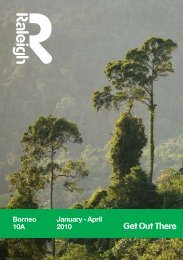
![Love Off-the-beaten-track With Raleigh International[1]](https://img.yumpu.com/25658839/1/184x260/love-off-the-beaten-track-with-raleigh-international1.jpg?quality=85)
